I took this Nikon super-telephoto lens on a dream safari trip – and learned a big lesson about pro primes
Was this fixed focal length pro telephoto lens the right choice?
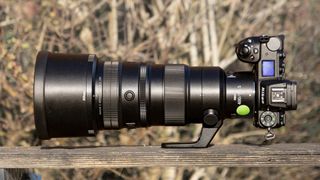
I traveled to Kenya recently for a short trip during which I had the chance to visit a couple of national parks and see some spectacular wildlife. When I'd previously lived in this beautiful country, I never had a super-telephoto lens to hand that could get me really close for shots of lions, rhinos, and more. I needed to remedy that on this trip.
This would be my chance to bring a lens that I otherwise couldn’t afford, nor make enough use of day to day to justify owning one. I was keen to take just one extra pro lens for the week to go with my Nikon Z6 II mirrorless camera, and for it to be relatively lightweight but capable of producing pin-sharp and high-quality images.
After much consideration of Nikon’s best Z lenses , which includes a decent range of prime and zoom telephoto lenses, I opted for the Nikkor Z 400mm F4/.5 VR S. Would this be the lens that equipped me to get the wildlife photos I dreamed of?

Choices, choices

Also on my lenses shortlist for the trip were the Z 100-400mm f/4.5-5.6 VR S , the Z 180-600mm f/5.6-6.3 VR , and the Z 600mm F/6.3 VR S . So how did I land on the Z 400mm f/4.5 VR S? By elimination.
The 600mm focal length is popular with many wildlife photographers and ideal for birdlife, but I was also aware of the wildlife variety I’d see. For example, would Nikon’s Z 600mm F/6.3 VR S be too tight for a giraffe? Most likely.
The versatility of the 180-600mm was tempting, but it’s larger and heavier than the rest, and it doesn’t don the ‘S’ badge that Nikon’s pro lenses do. TechRadar praised the zoom lens but noted that its optical quality, especially at 400mm and greater, is bettered by the fixed focal length lens. That lens wasn't right either.

I was originally going to opt for the 100-400mm, an excellent lens I personally reviewed for TechRadar. However, I was convinced I’d mostly be using whatever lens I took at its maximum focal length, so why not just go for the 400mm? It was more risky, but the slightly wider maximum aperture and its optical quality versus the zoom lens set to 400mm – plus it being around 15% lighter – swayed it for me over zoom versatility.
Get daily insight, inspiration and deals in your inbox
Get the hottest deals available in your inbox plus news, reviews, opinion, analysis and more from the TechRadar team.
Would I regret that choice? Don’t judge me, but as a fail-safe, I also took the Nikkor Z 70-180mm F/2.8 lens without intending to use it – just in case I really, really needed it.
A steep learning curve
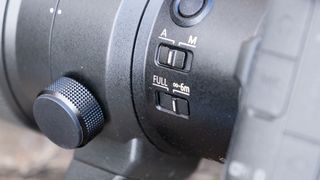
Hiring a lens for a specific shoot or a short trip is an excellent way to have top-quality glass in your hand without forking out the full whack to own it. An East African safari is a perfect example of when to do it. Trusted camera gear rental companies include Adorama in the US and Hireacamera in the UK.
The most telephoto Nikon Z lens I own has a maximum 180mm reach. That’s great for environmental wildlife or when you can get physically close to wildlife, but for me, it didn't get the photos I hoped for during my time living in Kenya. The 400mm f/4.5 lens was going to get me close to the action in ways I hadn’t before, and I couldn’t wait.
That comes with a word of warning – take as much time as you can to familiarize yourself with the new gear. I hadn’t used the 400mm lens before, nor did I have much time to play around with it ahead of finding myself gazing out the window of my friend’s 4x4 in Nairobi National Park, and I learned the hard way, quickly.

There were a couple of early moments where it didn’t focus on my subject at all. Unknowingly, the focus limiter switch was set to 6m to infinity rather than its full range, so anything closer than 6m wouldn’t go in focus. It’s a simple thing, but when the gear is new, problem-solving takes longer.
Tweaks were also necessary to get the best performance out of my lens and camera combination, mainly regarding focusing. The Z6 II’s subject detection autofocus for animals is simpler and less effective than its people tracking (the Z8 performs better). Ultimately, I honed my technique over the coming days, especially making use of manual focus refinements when autofocus wasn’t quite hitting the spot.
You’ll use the maximum reach of a lens for most photography on safari
I was limited to the 400mm focal length, and it didn’t matter. At times, the wildlife was practically in touching distance, yet in those moments, I gravitated to my phone for quick videos and snaps or simply enjoyed the moment without a camera.
Only on one occasion did I swap out the 400mm lens for the 70-180mm – for a photo of a giraffe that I was otherwise too tight on with the 400mm. It’s not my favorite photograph of the trip, though – far from it (see below).
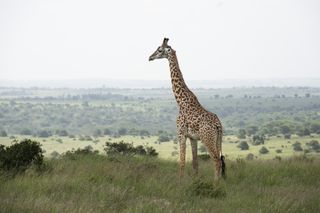
When I reviewed the 100-400mm lens, I often found myself shooting wildlife and sports at the telephoto end – probably around 90% at 400mm – so here I was getting the best possible quality at that focal length by opting for the fixed focal length option instead. The maximum f/4.5 aperture is slightly better than the 100-400mm’s f/5.6 when set to 400mm, but, honestly, that 2/3EV didn’t matter to me one bit, especially in the bright weather. It wasn't for shallower depth of field either – a full frame 400mm lens at f/4.5 is super shallow, and I often stopped down to f/5.6 to get a little extra depth of field anyway.

And then came the kind of moment that I had hoped for: we spotted a serval wild cat up the track. The elusive creature jumped into the verge and out of sight. We tracked its potential path, and out of pure luck, we crossed paths with it again a mile further into the park.
The 400mm focal length was perfect for this encounter – a 600mm would have been too tight, the 70-180mm not tight enough. I took a single frame as it stared directly down the lens, and before I knew it, the serval had disappeared into the long grass.
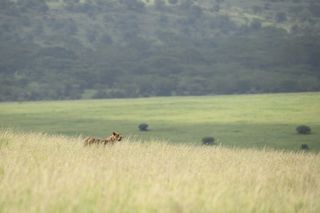
Based on my experience using the lens and the photos I have come away with, I’m happy to have stuck with a single focal length and the 400mm option that I chose. Yes, there were times I wanted to be closer, like when we saw lions some distance away (see above). But, overall, this focal length offered the best of both worlds, the composition and depth of field I like for wildlife in various shapes and sizes, with a little scope for cropping afterward. I think I'd choose it again next time, but maybe take a teleconverter with me for the odd occasion I'd like to get even closer. That's another reason to opt for a fixed focal length lens – they perform better with teleconverters than zoom lenses do.
You might also like
- How to take safari-like natural wildlife photos at the zoo
- OM System OM-1 II is a refresh of one of the world’s best wildlife photography cameras
- Best wildlife photography camera 2022: our top picks from Canon, Nikon and more

Tim is the Cameras editor at TechRadar. He has enjoyed more than 15 years in the photo video industry with most of those in the world of tech journalism. During his time as Deputy Technical Editor with Amateur Photographer, as a freelancer and consequently editor at Tech Radar, Tim has developed a deeply technical knowledge and practical experience with cameras, educating others through news, reviews and features. He’s also worked in video production for Studio 44 with clients including Canon, and volunteers his spare time to consult a non-profit, diverse stories team based in Nairobi. Tim is curious, a keen creative, avid footballer and runner, and moderate flat white drinker who has lived in Kenya and believes we have much to enjoy and learn from each other.
It’s finally happened: Canon opens up its RF-mount to Sigma and Tamron lenses
Nikon Z 40mm f/2 review: this cheap, modern 'nifty forty' has been my everyday lens for over a year and it hasn't let me down
Samsung's all-new S90D OLED TV is already on sale: save $200 while you can
Most Popular
- 2 Maiyunda M1is a mini PC with four SSD slots hidden on the front and can hold up to 40TB of storage
- 3 Microsoft strips Windows 11's Control Panel of another tool - is the writing on the wall?
- 4 Meta’s massive OS announcement is more exciting than a Meta Quest 4 reveal, and VR will never be the same again
- 5 NYT Strands today — hints, answers and spangram for Friday, April 26 (game #54)
- 2 This Android phone for audiophiles offers a hi-res DAC, balanced output and 3.5mm jack – plus a cool cyberpunk look that puts Google and OnePlus to shame
- 3 Samsung’s next Galaxy AI feature could revolutionize smartphone video
- 4 VMware users warned to brace for next big upheaval as latest Broadcom changes rumble on
- 5 Fujifilm's next budget camera may house surprisingly powerful hardware

Currently Trending:
APS-C vs full-frame – which sensor size is best?
Why are we obsessed by full-frame sensors, alternatives to the fujifilm x100v here are 7 retro styled cameras, amateur photographer of the year 2023 winners announced, nikon z8 wins product of the year at the 2024 ap awards.
Advertisement
When you purchase through links on our site, we may earn an affiliate commission. Here’s how it works
Nikon Z5 review – full-frame mirrorless, for less
: 4 out of 5
Build/Handling
: 5 out of 5
Dynamic Range
Image quality, lcd viewfinder, overall rating.
Pros: + Reflects the excellent handing from the Nikon Z6 II/Z7 II + Performs well with F-mount SLR lenses via FTZ adapter + Build quality is excellent for a camera at its price point + First full frame Z-series model to offer dual SD card slots
Cons: - 1.7x crop is applied when shooting 4K (UHD) video - 24-50mm kit zoom is likely to be quickly outgrown - Produces cool looking images in AWB mode in sunlight - 4.5fps continuous burst shooting is slow by today’s standard
Manufacturer:
The mirrorless nikon z5 is a cheap, entry-level full-frame camera, but three years on from release, isn't it time we got an update.
The Nikon Z5 is Nikon’s cheapest full frame mirrorless camera . Designed as an entry-point for those who want to upgrade to the larger sensor size, the Z5 looks a lot like its premium cousins in the series, the high-resolution Nikon Z7 II and the all-rounder Z6 II .
However, it’s somewhat stripped-down compared to those cameras and their predecessors, with a 24.3MP full-frame CMOS sensor that isn’t backside-illuminated. It’s missing a top LCD plate, and a glance at the specs below may give you the feeling that some of them are a little pedestrian. Just 4.5fps burst shooting? A crop on 4K video?
However, the Nikon Z5 has a lot of things going for it. The camera is fully weather-sealed, for one, and boasts a sophisticated 5-axis in-body image stabilisation system. Its sensor can reach ISO 51,200 natively, and its 3,680k-dot OLED electronic viewfinder (inherited from the original Z6) is a thing of beauty. And then of course there’s the price; it’s affordable for a full frame mirrorless camera , with a price well below $2000 / £2000, even with a decent lens thrown in.
Nikon Z5 at a glance:
- $996 / £1,059 body only ($1,296 / £1,539 with 24-50mm kit lens)
- 24.3MP full-frame CMOS sensor
- EXPEED 6 image processor
- 5-axis in-body image stabilisation (IBIS)
- 0.5in, 3,680k-dot OLED EVF
- 4.5fps burst shooting
- 4K, 30p video recording (cropped)
- Dual SD card slots
The Nikon Z5 was released in 2020, an entry-level full-framer going up against the likes of the Canon EOS RP , Sony A7 III and the Panasonic Lumix S5 . Since then, though, the Canon EOS RP’s price has dropped thanks to the arrival of the similar Canon EOS R8 . Sony has taken the wraps off its A7 IV , and Panasonic received accolades for the shiny new Lumix S5 II (and Lumix S5 IIX , too). And the Nikon Z5? As yet, there is no sign of a Z5 II in the offing. Typical camera timelines would predict one to be due, but for now the Z5 soldiers on as it is.

The Nikon Z5 can be purchased body only or with a retractable 24-50mm f/4-6.3 zoom lens. Image credit: Michael Topham
While the Nikon Z5 hasn’t changed in the past three years, the world around it has. In one way, this is to the advantage of prospective Z5 buyers. The range of Nikon Z-Mount lenses has continued to expand, with useful mid-priced all-rounders like the Z 24-200mm f/4-6.3 VR and spectacular premium primes like the Z 85mm f/1.2 S .
The Nikon Z5 was released two years into Nikon’s mirrorless journey. Five years in, we ask if this entry-level full-frame mirrorless model remains worth buying. Our full Nikon Z5 test and review will help readers to weigh up whether to buy one, wait for a sequel, or plump for one of its updated rivals.
Nikon Z5 Features
By 2020, Nikon had developed in a short space of time an extensive range of Nikkor Z lenses. To attract new and budget users to the Z5, the company needed to release it with an affordable kit zoom. The kit lenses on full frame cameras are typically quite large, too, so this 2x kit zoom may have been intended as a compact alternative to typical full frame camera kits.
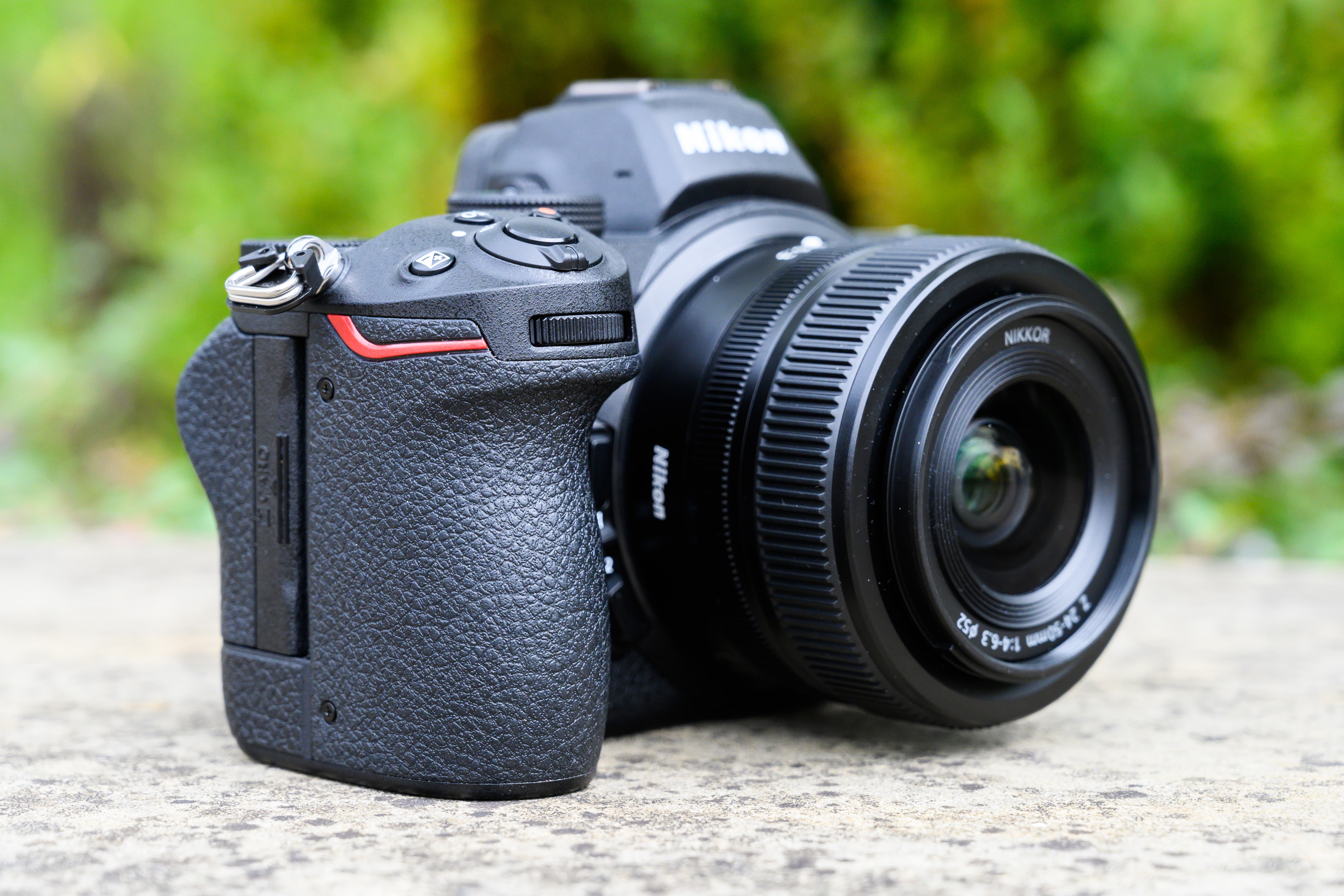
The advantage of the small Z 24-50mm f/4-6.3 kit zoom is that it keeps the camera and lens combination nice and compact. Image credit: Michael Topham
The Z 24-50mm f/4-6.3, which can be purchased with the Z5 or separately, is a no frills lens with a fairly restrictive focal length; yet is lightweight and has a retractable zoom mechanism to keep it as compact as possible when space is limited.
Like the Z6 II and Z7 II, the Z5 shares the same large-diameter, short back-focus lens mount that has a flange distance of 16mm from lens to sensor. To keep Nikon DSLR holdouts happy, the Z5 can be paired and used with F mount (FX) lenses via Nikon’s FTZ adapter, and a subsequent firmware update has made the Z5 compatible with Nikon’s newer FTZ II version.
Though the pixel count is similar to the Z6 II, the Z5’s sensor is different. The Z5’s 24.3-million-pixel sensor is a standard CMOS chip, whereas the Z6’s has a back-illuminated structure, which should see it deliver a slightly better performance in low light – something I’ll cover in more detail later. The chip features an anti-aliasing filter like the Z6 and shoots across the same native ISO sensitivity range of ISO 100-51,200, however it doesn’t permit shooting as high as ISO 204,800.

The Nikon Z5’s sensor doesn’t feature a back-illuminated structure like its Nikon Z6 II cousin. Image credit: Michael Topham
Enter the extended ISO settings and you’ll find it shoots between ISO 50-102,400 . Given that it uses the same EXPEED 6 image processor as the original Z6 and handles similar data throughput, you could be mistaken for thinking it rattles out a consecutive burst of shots as quickly; but this isn’t the case.
Whereas the Z6 can fire off a burst at a brisk 12fps (14fps for the Z6 II), the Z5 shoots a continuous burst at a rather more pedestrian 4.5fps.
The silent shooting mode is invaluable for inconspicuous shooting, and automatically engages the electronic shutter. Unlike some mirrorless cameras , though, you can’t set the shutter speed beyond its maximum of 1/8000sec.
The Z5 inherited a peculiarity that we observed on the original Z6 and Z7, whereby the highest shutter speed is restricted when using the electronic first-curtain option. While it’s great to have this to eradicate blurring caused by shutter shock, you’d need to disable it in order to shoot faster than 1/2000sec.
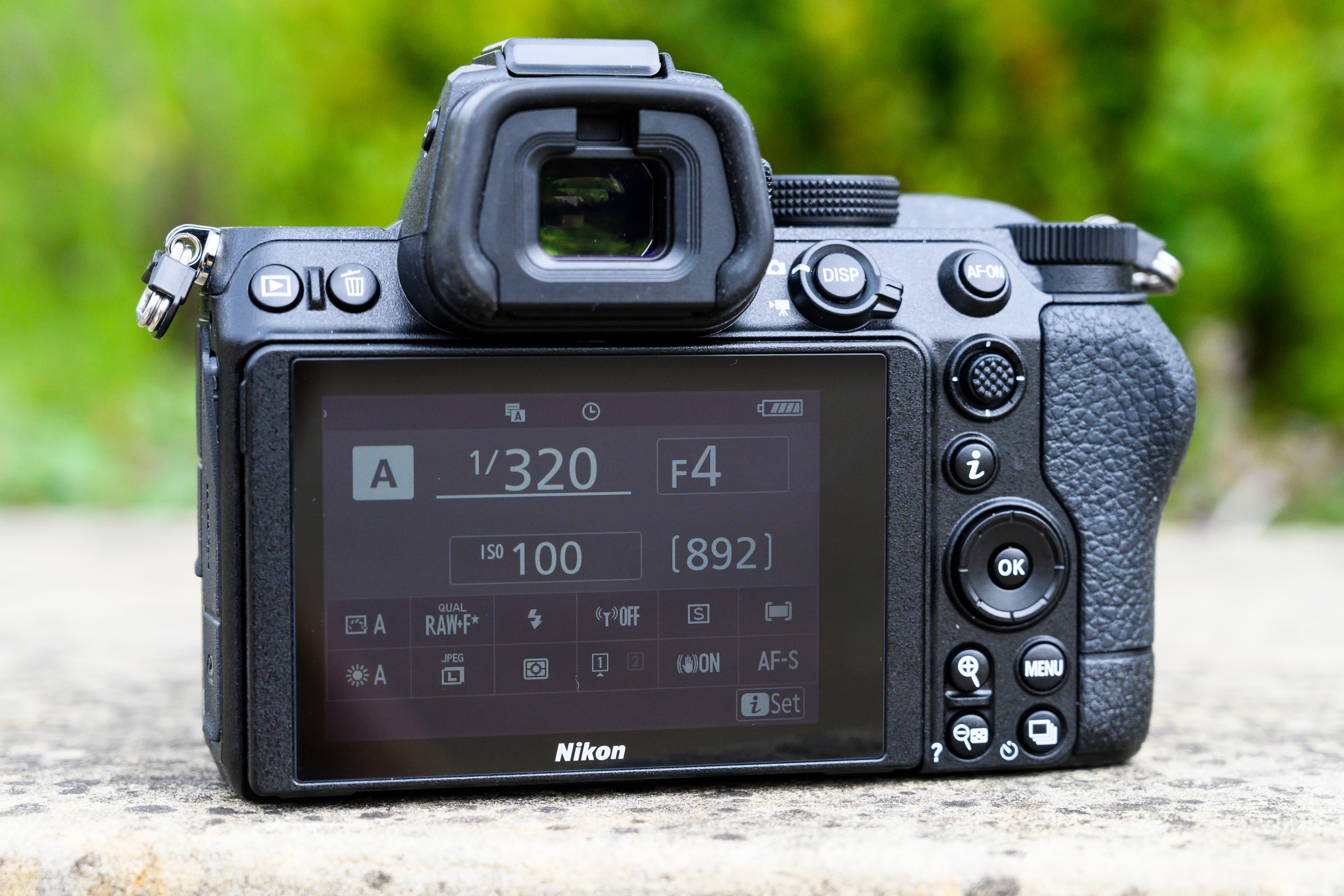
The Nikon Z5 has an identical arrangement of buttons and dials at the rear as Nikon’s Z6 II and Z7 II. Image credit: Michael Topham
To counteract shaky handheld movements, the Z5 incorporates the same 5-axis in-body image stabilisation (IBIS) system first seen on the Z6 and Z7. This is great to see on a camera at this level and gives it an advantage over rivals that rely entirely on optical stabilisation built into the lens – Canon’s EOS RP being one such example. The IBIS system lets users shoot sharp shots up to 5 stops slower than would otherwise be possible.
Compared to the usual pitch and yaw correction that’s provided by in-lens optical stabilisation, IBIS additionally corrects for rotation around the lens axis, which helps when shooting hand-held video or attempting shots using slow shutter speeds. In addition, it corrects left-right and up-down movements, which can have a significant impact when shooting subjects and details from close distances.
Pairing the Z5 with an F-mount (FX) lens with vibration reduction (VR) built-in, with Nikon’s FTZ adapter sees the in-body and in-lens systems work together. Pitch and yaw is corrected by the lens, with IBIS compensating for rotation around the lens axis.

A side view of the kit zoom having extended it from its retracted position. Note the headphone and microphone ports that are located behind the same rubber flap. Image credit: Michael Topham
The Z5’s hybrid autofocus system is similar to the Z6 II’s. It arranges 273 phase detection AF points across 90% of the frame area and there is the option to select every other point for faster AF point repositioning across the frame. The detection range isn’t as extensive as the Z6 II’s though. It covers -3EV to 19EV when low-light mode is enabled from the autofocus custom setting menu and -2EV to +19EV when it’s turned off.
Elsewhere, users get a fine selection of AF-area modes, including single-point AF, the choice of two wide-area AF modes (large and small) and an auto AF mode that ties in with face detection and subject tracking.
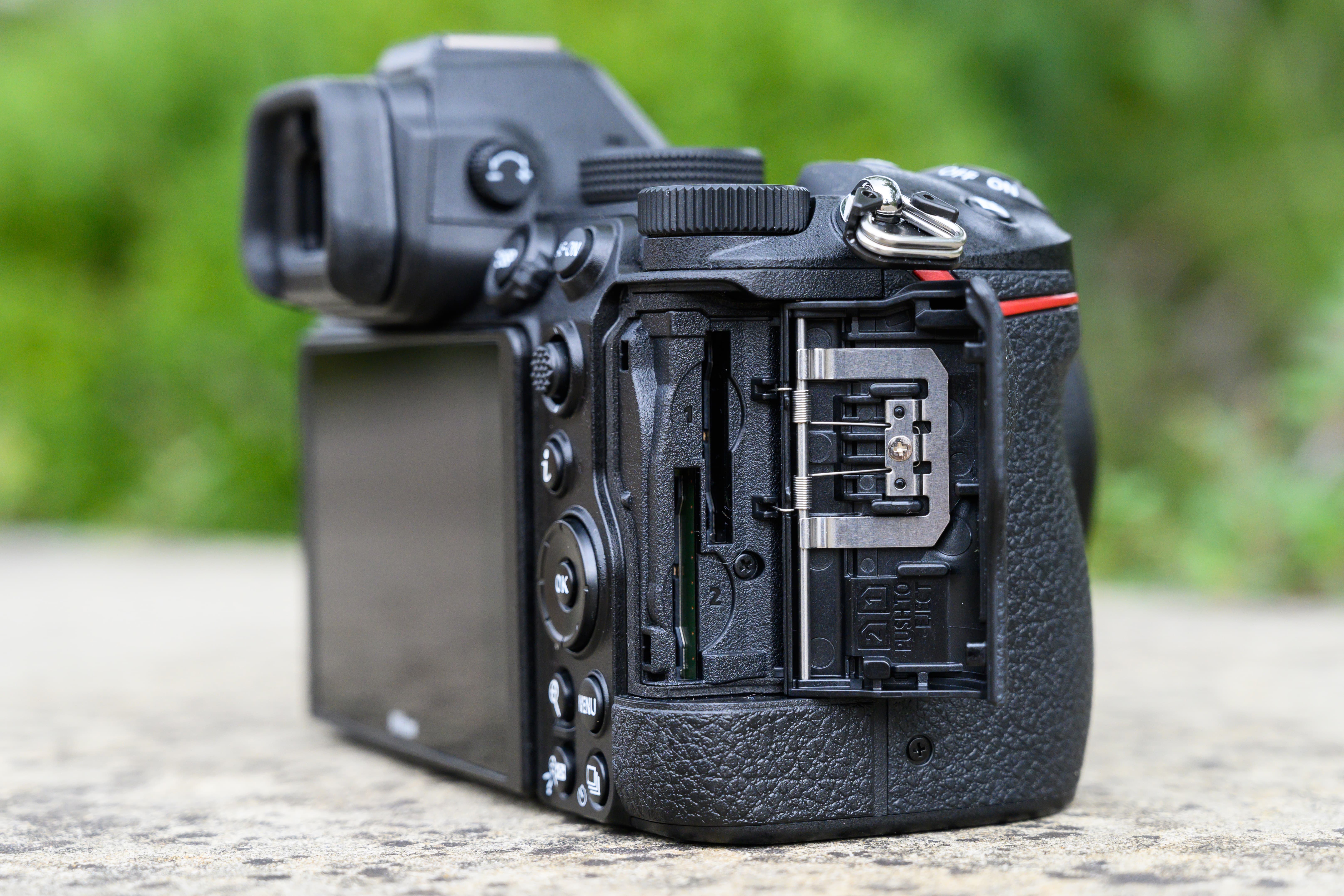
The Z5’s dual SD card slots are staggered behind a secure and robustly made memory card door. Image credit: Michael Topham
High-resolution video is available in 4K (UHD) resolution at up to 30p , but unlike the Z6 II that records 4K (UHD) footage using the full width of the sensor, the Z5 enforces a 1.7x crop . This means you’re unable to shoot 4K video wider than 41mm using the 24-50mm kit lens. This might not be wide enough for some, and even with a wide-angle lens like the Z 14-30mm f/4 S, the widest you can shoot at is 24mm.
Switching the resolution to Full HD 1080p lets you record movies without a crop at frame rates up to 60p, but again the Z6 II has an advantage in this; being better suited to slow motion recording with frame rates up to 120fps. Microphone and headphone sockets are provided and are located one above the other to the side of the Z5’s HDMI, USB-C and remote ports.
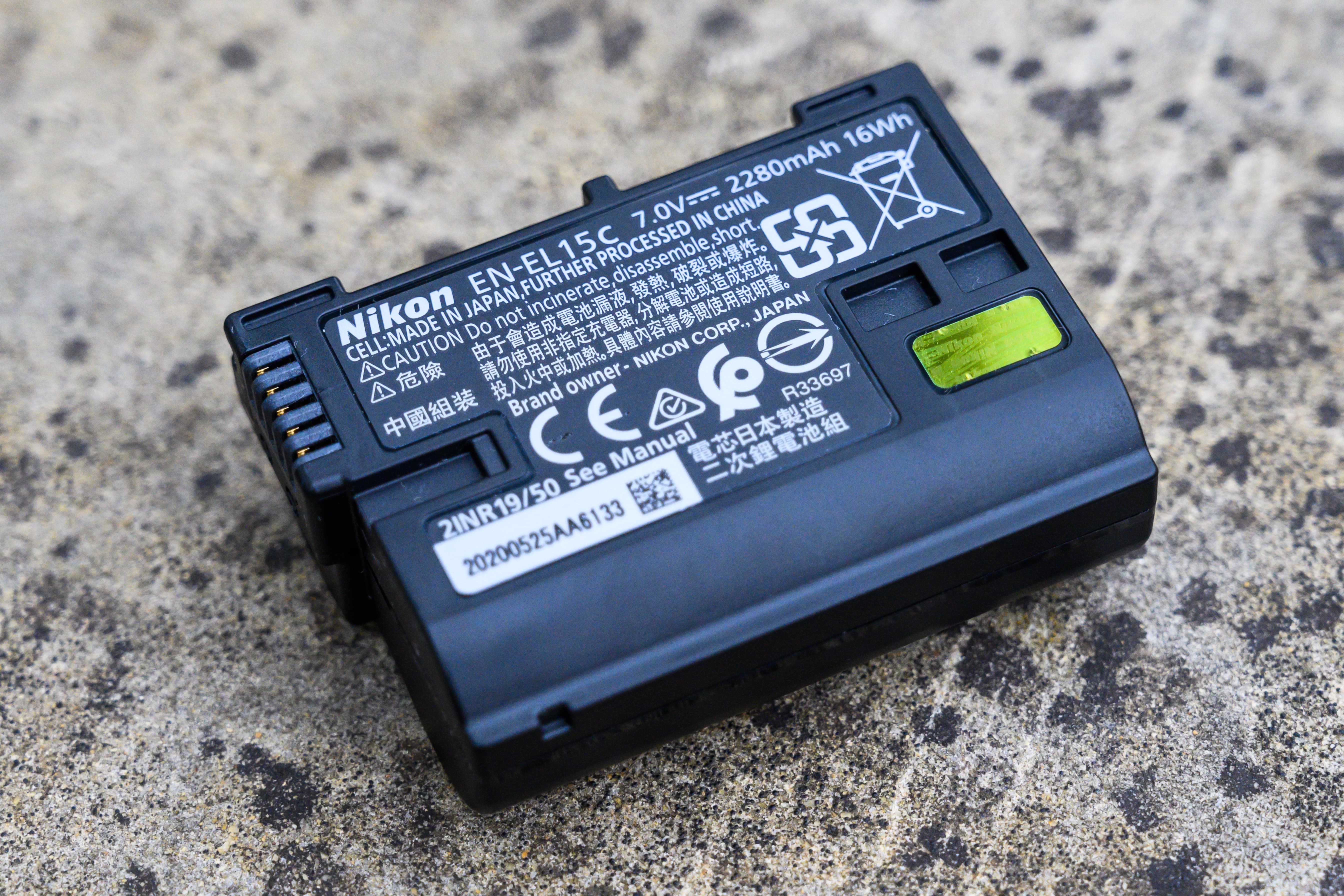
Nikon’s latest EN-EL15c rechargeable battery. Spares are readily available and cost $69 / £65 each. Image credit: Michael Topham
The Z5 accepts Nikon’s latest EN-EL15c rechargeable battery. It is compatible with older EN-EL15 batteries too, but users won’t get the same number of shots per charge (470 using the LCD and 390 shots with the EVF) as they will with the EN-EL15c.
USB power delivery is also provided . This serves as a useful way of topping up the battery between shooting, with the option to power the Z5 when it’s turned on during operation. The alternative to this is to buy the MB-N10 battery grip, which was originally made for the Z6 but also fits the Z5. It accepts two batteries and increases battery life closer to 1000 shots, which should suffice for an average day’s shooting.
Nikon Z5 Focal points
Here we take a quick look at a few of the Z5’s other features we’re yet to touch on.
- My menu: The My Menu setting gives users the choice of customising their most frequently used menu settings into one area for quick and easy access. Adding and removing items from the My Menu is extremely easy to do – simply tap the Z5’s responsive touchscreen.
- Stills/Video switch: To record video you’re required to flick the stills/video switch that encircles the DISP button at the rear. Only when this has been done will you find that you’re able to start/stop video recording using the movie-record button on the top-plate.
- Image size: Users get the choice of three image sizes when the image area is set to FX. As well as Large (24MP), there are Medium (13.5MP), and Small (6MP) options. Set the image area to DX (applies a 1.5x crop) and you can set the image size between Large (10.3MP), Medium (5.6MP) or Small (2.6MP).
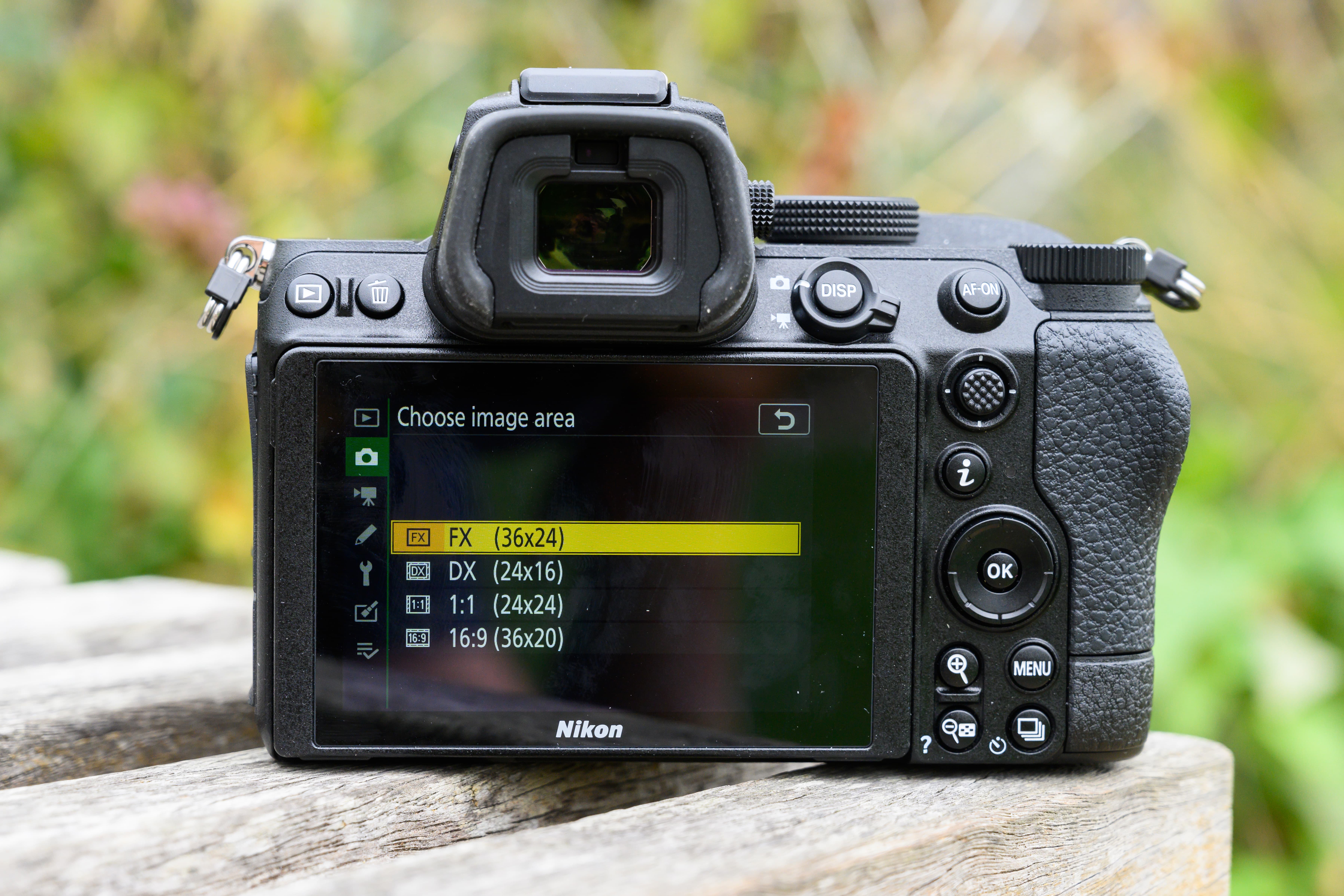
The various different image area options as loaded from the Z5’s main menu. Image credit: Michael Topham
- Function buttons: The two Fn1 and Fn2 buttons around the lens mount are customisable and can be depressed using the middle finger. Set to default, Fn1 adjusts White Balance and Fn2 adjusts focus mode/AF-area mode in combination with using the front and rear command dials.
- Accessory terminal: The Z5’s accessory terminal at the side allows users to plug in a wired remote shutter release cable such as Nikon’s MC-DC2. Alternatively, users can trigger the shutter wirelessly from a mobile device running Nikon’s SnapBridge app.
- Bluetooth: An always-on Bluetooth LE connection can be setup between the Z5 and your phone, enabling every single picture you shoot to be automatically transferred to your phone. Selecting the 2MP mode helps speed up transfer times and saves on valuable storage space.
Nikon Z5 Build and Handling
So-called ‘entry-level’ cameras are generally perceived as lacking in build quality. By using cheaper materials, manufacturers cut costs in production and offer their cameras for considerably less than top-of-the-line models. The good news is that Nikon hasn’t cut any corners whatsoever with the Z5. My first impression handling the camera out of the box was that the build quality upholds a similar feel and same level of robustness to the original Z6 and Z7.
Despite its positioning at the lower-end of the Z-series, it’s weather-sealed like its peers , helping to protect dust and moisture penetrating the internals. Anyone who shoots regularly in the portrait orientation or would like to increase shooting stamina will appreciate that the MB-N10 battery grip provides the same level of dust-and drip-resistance as the body.
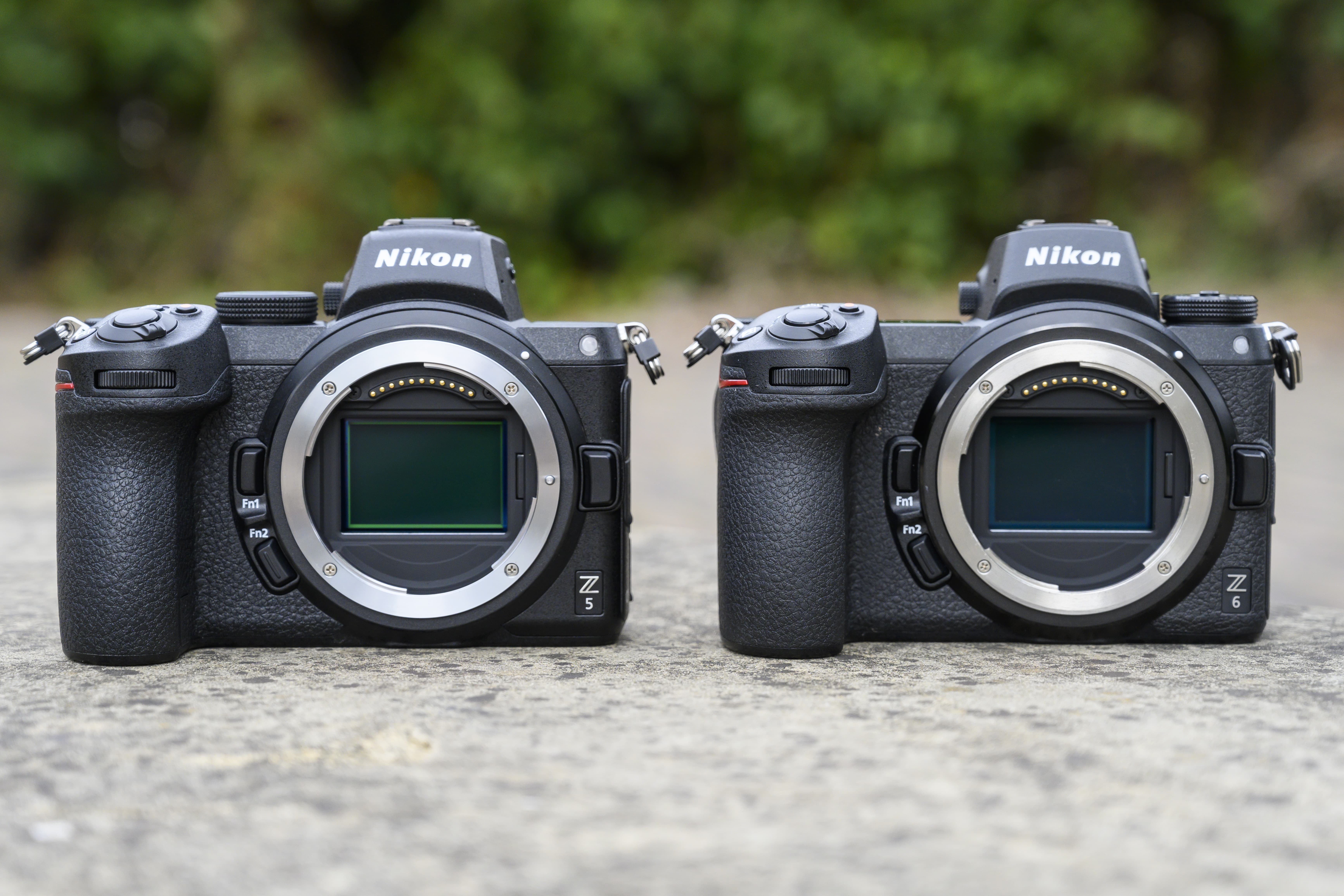
The Nikon Z5 (left) and Nikon Z6 (right). Other than the fact the mode dial is repositioned on the Z5, it’s difficult to tell the two cameras apart in this view. Image credit: Michael Topham
It’s hard to spot many differences compared to the Z6 II and Z7 II when the Z5 is viewed directly from the front. It has a similar deep rubberised grip, pair of customisable function buttons around the perimeter of its lens mount and flash of red beside the front command dial that’s long been associated with Nikon’s interchangeable lens cameras. The dimensions of the body are virtually identical, with the biggest difference on top plate being the position of the mode dial, which replaces a top plate display.
Photographers who like glancing down at a top plate display to check settings before they shoot will find themselves referring to the informative information display on the screen instead. This can be adjusted to display as dark on light or light or dark from the setup menu depending on user preference.
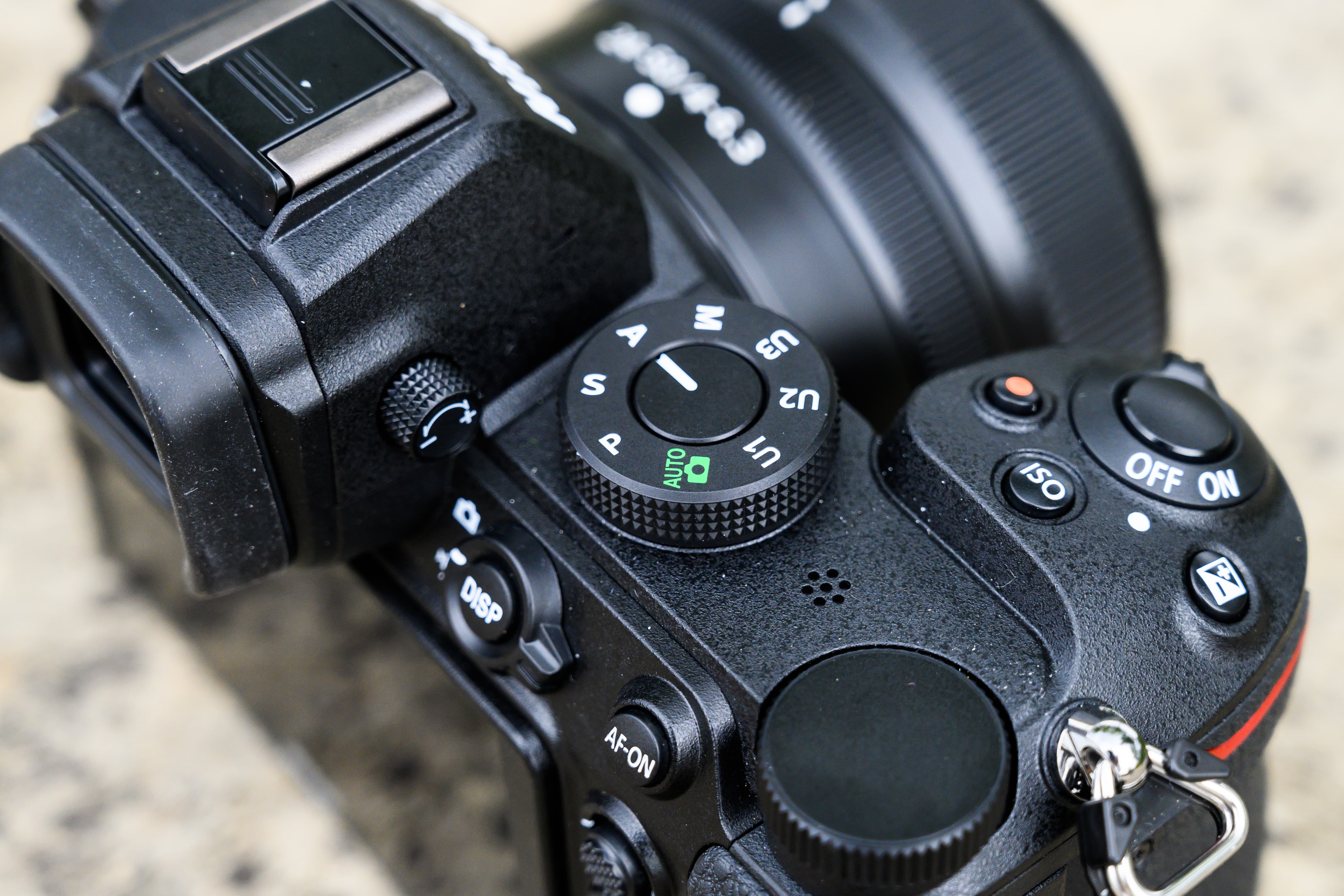
The exposure compensation button is found on the corner of the body. In typical Nikon fashion, the on/off switch is intuitively paired with the shutter button. Image credit: Michael Topham
The mode dial doesn’t require you to hold a centre button to rotate it and positively locates at each mode setting. Meanwhile, the positioning of the movie-rec, ISO and exposure compensation buttons are unchanged. They’re conveniently positioned behind the shutter button that’s surrounded by the On/Off switch for intuitive start-up with your index finger.
After the criticisms Nikon received for releasing the Z6 and Z7 with a single XQD card slot, it’s good to see the Z5 equipped with not one, but two SD card slots , both of which support UHS-II memory cards. The role played by slot 2, which is staggered slightly below Slot 1 can be set to overflow, backup or to record JPEGs when raw files are being recorded to Slot 1.
The option to records stills to one card and video to the other is absent, however it’s good to see Nikon listening to customer feedback and providing an essential backup facility on a camera of the Z5’s entry-level positioning.

The Nikon Z5 (left) and Nikon Z6 (right). The general feel of the Nikon Z5 in the hand is very similar to that of the Nikon Z6, albeit with a different layout and no display panel on the top plate. Image credit: Michael Topham
At the rear the Z5’s layout of buttons and controls is a carbon copy of the Z6 and Z7 . This will be well received by anyone contemplating the Z5 as a backup body and means you can transition between all of Nikon’s full-frame mirrorless models seamlessly without giving operation a second thought. You get all the dedicated buttons you need, including an excellent ‘i’ button that can be customised to instantly pull up your most frequently used settings.
Drive modes are loaded using a dedicated button below the menu button and you get a joystick that falls naturally under your thumb for shifting the focus point around the frame. Its knurled texture also helps distinguish it from the AF-ON button above when the viewfinder is lifted to your eye.
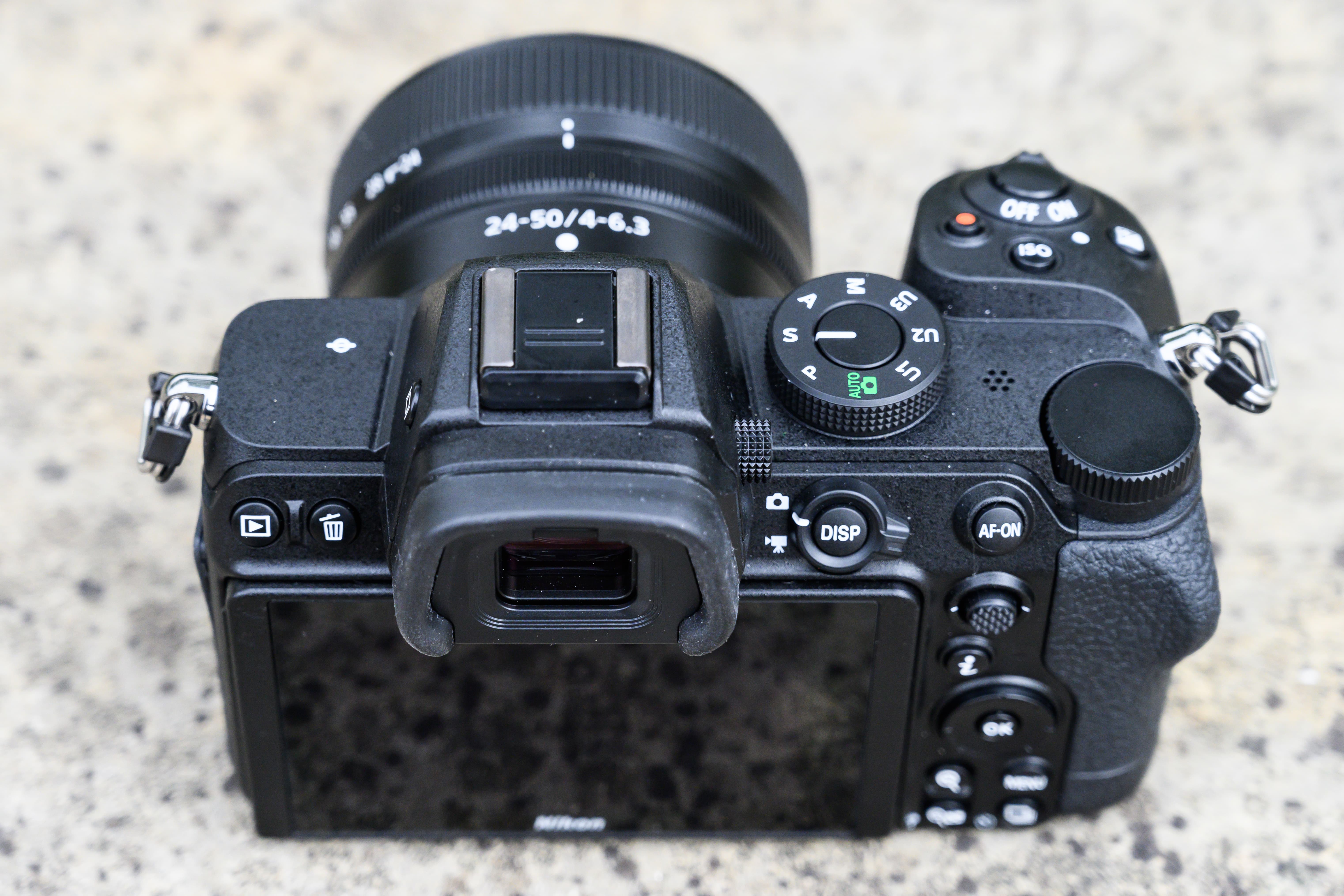
The Z5 upholds the solid and strong build quality that its Z6 and Z7 peers are known for. Image credit: Michael Topham
Much like we said when we reviewed the Z6 and Z7, the Z5 provides a sensational handling experience that makes it comfortable to hold and operate with smaller and larger lenses alike. It’s hard to think of a way that Nikon could improve the handling characteristics of the camera.
With its weather sealing, metal chassis and high quality construction, the Z5 is much more robustly made than its entry-level status implies.
Nikon Z5 Viewfinder and screen
Another likeness between the Z5 and Nikon’s Z6 and Z7 models is the electronic viewfinder it uses. The Z5’s 0.5in, 3.6-million-dot EVF with 0.8x magnification doesn’t match the resolution offered by some of the 5.76-million-dot electronic viewfinders we’ve tested of late, yet it’s a good example that faithfully displays exposure adjustments, white balance and colour in the preview image.
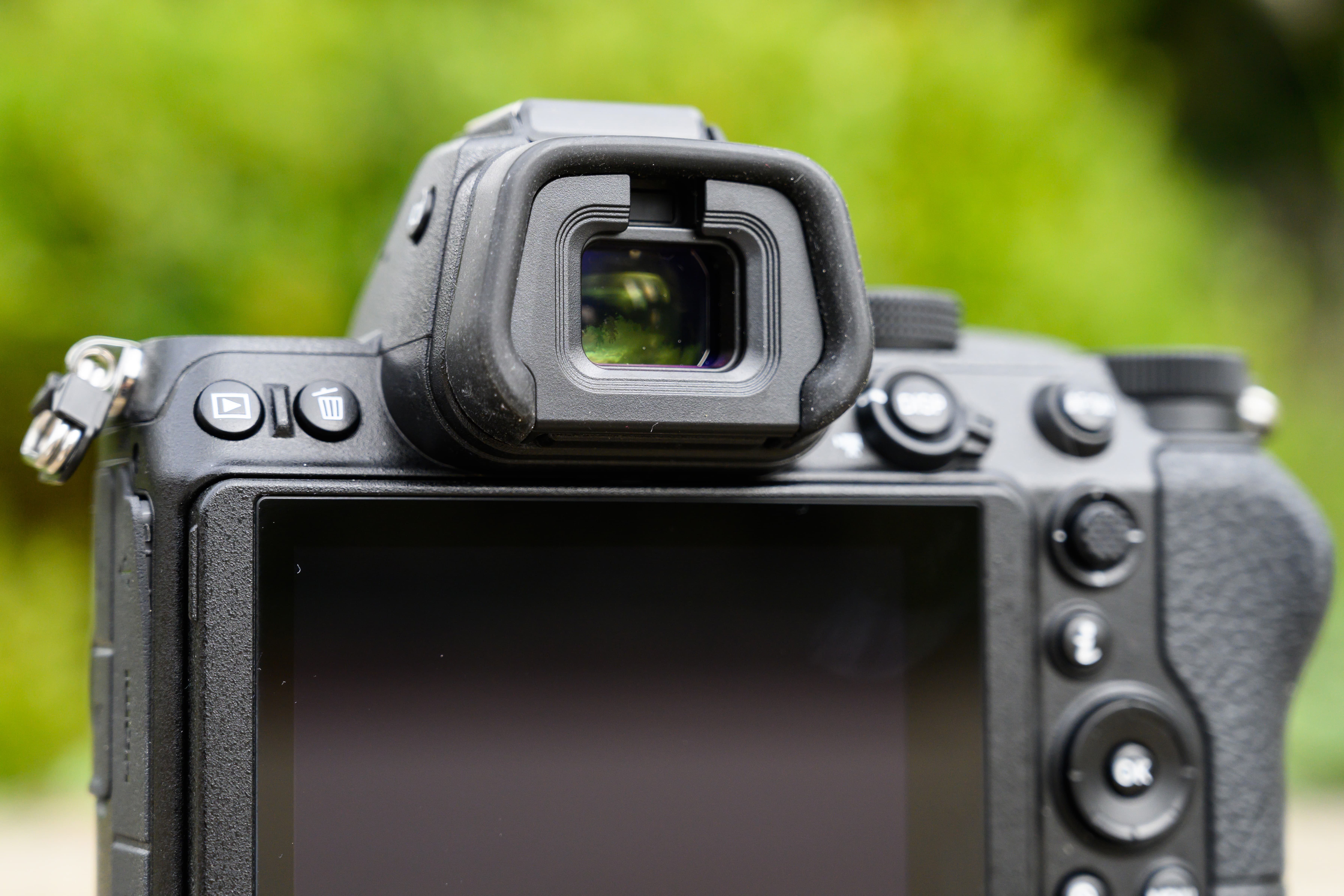
It’s great to see such a high resolution EVF on a camera of the Z5’s pedigree and price point. Image credit: Michael Topham
As well as providing an accurate preview of how aperture affects depth of field and a high level of sharpness in both normal viewing and at magnified settings, it’s ideal for reviewing images when bright sunlight plays havoc with reflections on the rear screen. Like the rear screen, the brightness and colour balance of the viewfinder can be manually adjusted from the setup menu, however I found no reason to deviate away from their default settings during my testing.
The EVF has a refresh rate of 60fps and switches between monitor and viewfinder displays quickly when the camera is raised or pulled away from the eye. The latter can be changed from the monitor mode selection button if you’d prefer to only use the EVF or screen rather than let it adjust automatically.

The Z5’s screen pulls out smoothly and can be angled up and down to help compose shots from awkward high and low angles. Image credit: Michael Topham
Complementing the viewfinder is a 3.2in touch sensitive screen that can be tilted down by 45° for overhead shots and upwards by 90° to aid with low-level shooting. What it doesn’t allow you to do is pull it out to the side to aid with portrait shooting from awkward angles, which rivals such as the Canon EOS RP and Panasonic Lumix S5 present an advantage.
The resolution of the screen (1,040k-dot) is lower than the 2.1-million dot resolution you get on the more expensive Nikon Z models, but I only noticed a difference when comparing the Z5’s screen alongside the others at maximum magnification. It displays a clear and detailed preview in Live View and playback modes and the sensitivity of the touch panel can’t be faulted either. It lets you navigate your way through the main menu precisely with very light taps and isn’t affected by rain droplets on its surface.
The Z5 put in an admirable focusing performance on test. It’s quick to lock on to near and far subjects, with its red AF target turning to green when correct focus is achieved. Something I did identify during use though is that it is quite easy to lose track of the AF point on the rear screen when the AF area mode is set to pinpoint AF or single-point AF and you’re working in bright conditions outdoors.
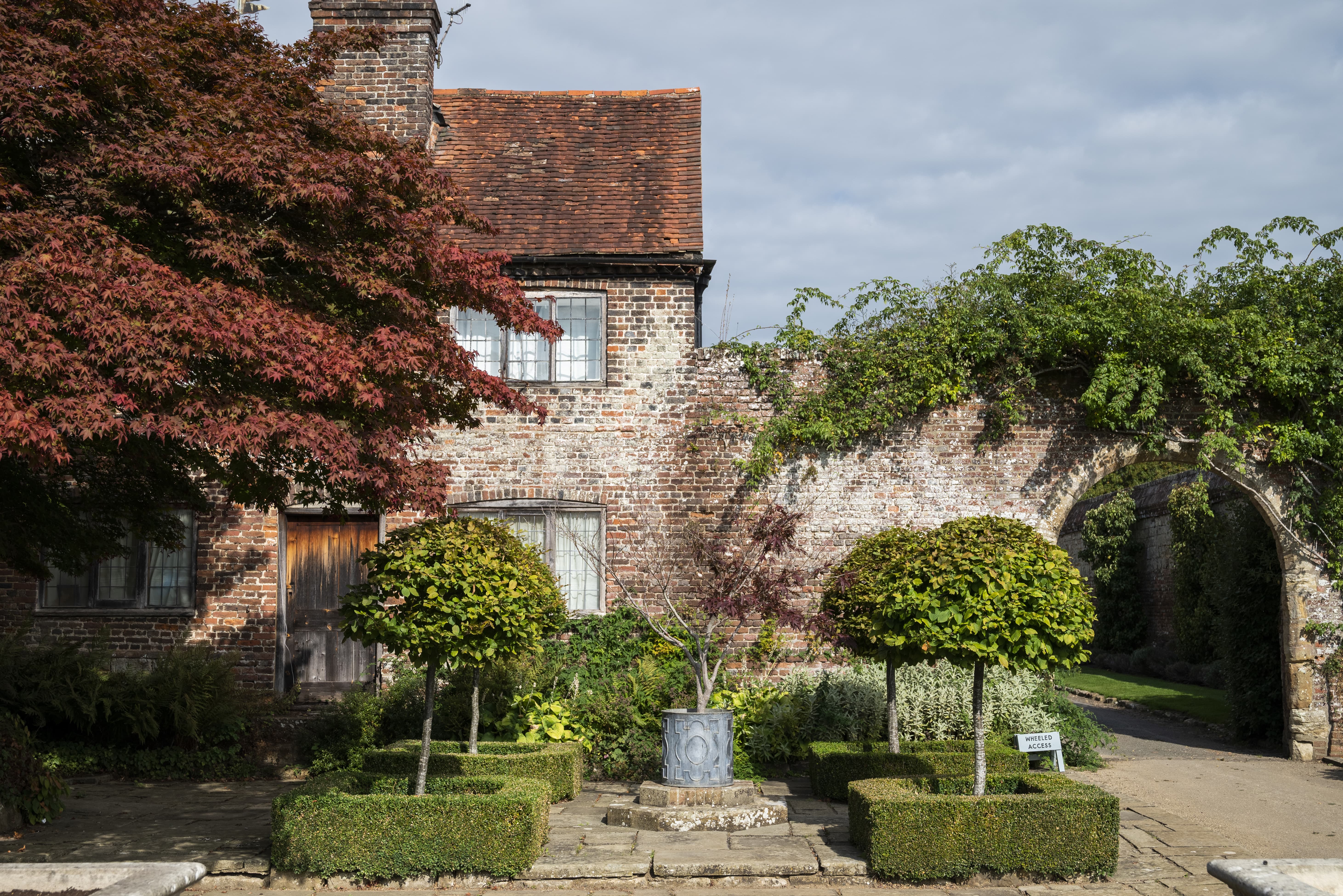
Nikon Z5, Nikkor Z 24-70mm f/4 S, 1/1000sec at f/5.6, ISO 100. Image credit: Michael Topham
I put this down to the boundary lines of the AF target being fairly thin. To reacquaint myself with its position I found myself nudging the AF point around the frame on a few occasions. The AF target can be shifted diagonally across the frame as well as up/down and left/right. With all the AF points active it takes 2.3secs to shift the AF point from one side of the frame to the other compared to 1.6secs when every other point is selected.

Nikon Z5, Nikkor Z 24-50mm f/4-6.3, 1/400sec at f/6.3, ISO 100. Image credit: Michael Topham
The Nikon Z6 II makes the better choice for photographers who regularly shoot high-speed action or sports with its ability to shoot 7.5fps faster, but it’s good to see the Z5’s focusing keeping apace with speedy subjects and offering a continuous focusing performance that’s on a par with its high end Z-series cousins. Face and eye detection is useful when shooting portraits, though this is one of the few things that cannot be added to a function button and has to be accessed via the autofocus settings from the custom setting menu.

Nikon Z5, Nikkor Z 70-200mm f/2.8 VR S, 1/500sec at f/2.8, ISO 100. Image credit: Michael Topham
Users get the option to select which eye they’d like the camera to focus on from a flick of the joystick and it’s the same when the camera is set to animal detection. Owners of cats and dogs who enjoy photographing their loved pets should take advantage of animal detection, however Nikon still isn’t as advanced as Sony in offering eye detection when recording movies, which is disabled when you enter video mode.
- Interested in close-ups and nature? See our Top Macro Photography Tips
Nikon Z5 Performance
The Z5 behaves like the Z6 II and Z7 II in the way it’s quick to start up and responds instantaneously to button presses, turning of dials and adjustments that are made using the touchscreen. There wasn’t any time during use where the camera interrupted my shooting, or prevented me capturing the shots I wanted. Nikon DSLR users tempted by the Z5 as an upgrade to their existing camera will immediately feel at home navigating the menu. It’s easy to relate to and everything is laid out similarly from the photo shooting menu through to the setup and retouch menus.
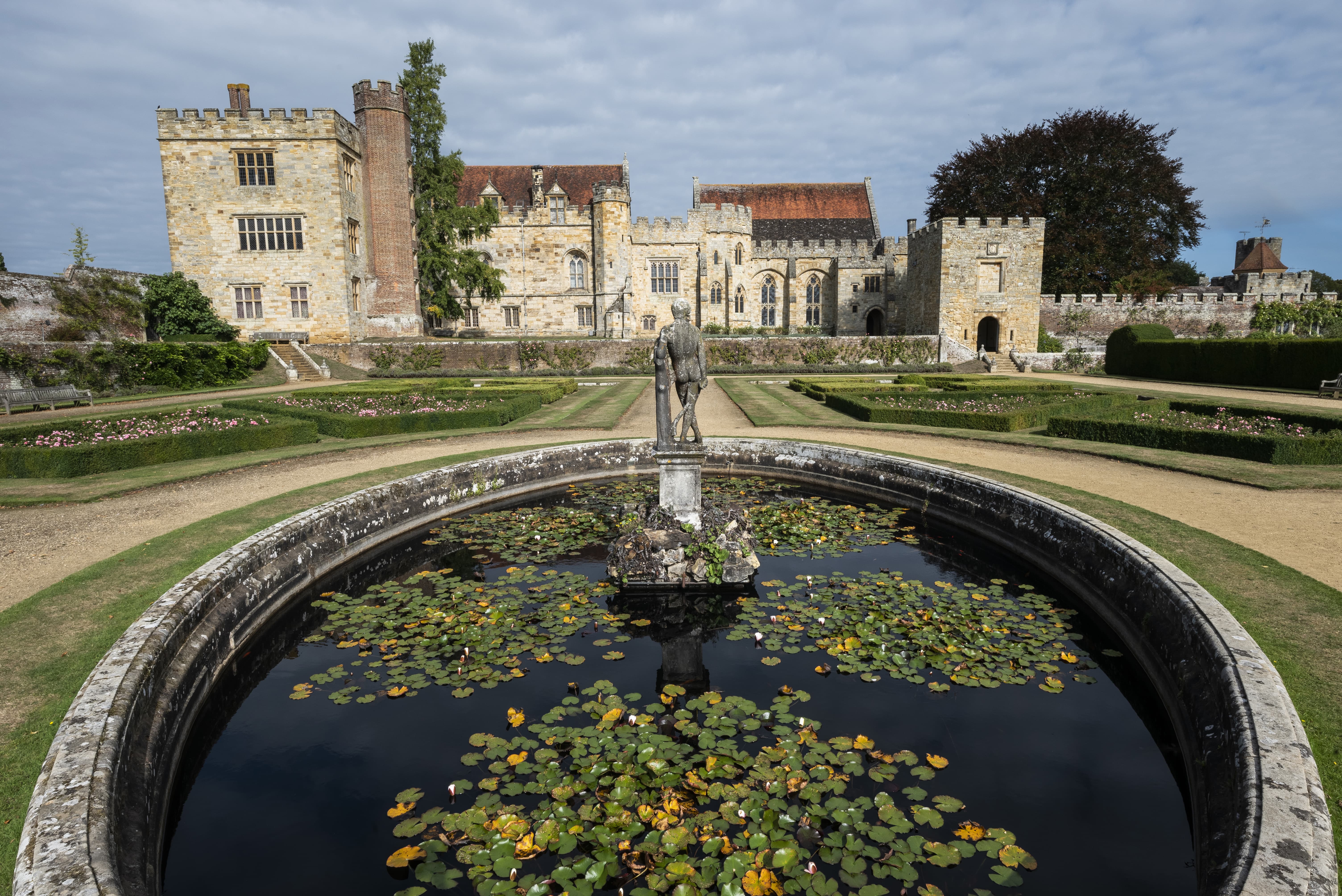
Nikon Z5, Nikkor Z 20mm f/1.8 S, 1/100sec at f/16, ISO 100. Image credit: Michael Topham
For those not familiar with Nikon, the Z5 isn’t a daunting camera to pick up and use. The Auto mode returns good results in the hands of novices who’d like to simply point and shoot with minimal user input and there is everything you could want at your fingertips to take manual control as your ability and experience grows.
The Z5’s matrix metering rarely misjudges scenes and exposes well for dim and bright conditions alike. There were only a few cases where I opted to dial down the exposure by -0.7EV in order to preserve highlight detail. If you find the camera is producing results that are a touch too cool for your liking in bright sunlight conditions it’s likely the camera’s white balance is set to the Auto A0 setting.

Nikon Z5, Nikkor Z 24-50mm f/4-6.3, 1/500sec at f/5, ISO 100. Image credit: Michael Topham
The Auto A1 and Auto A2 settings are intended to keep the overall atmosphere of the scene and preserve warm lighting colours respectively, but if like me you mainly shoot outdoors you may prefer to use Natural light auto, which tends to depict colour accurately.
Loaded with a pair of 64GB SDXC UHS-II memory cards facilitating 280MB/s read and 250MB/s write speeds, the Z5 showed it’s capable of recording just shy of 100 raw files in its continuous high (4.5fps) shooting mode before its buffer needed a breather. If you’d like to shoot at a slower speed there are several options.
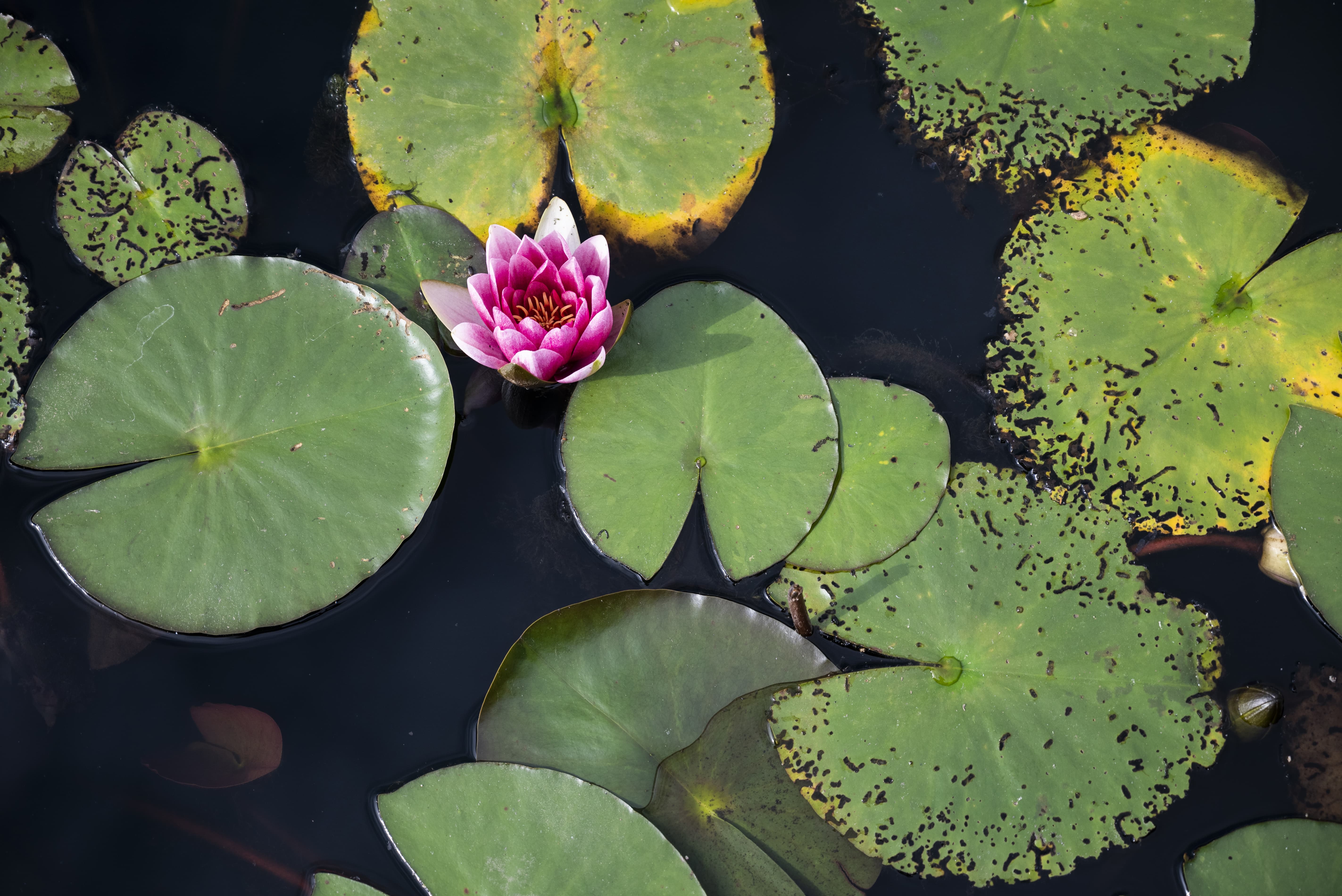
Nikon Z5, Nikkor Z 24-70mm f/4 S, 1/1000sec at f/4, ISO 100. Image credit: Michael Topham
The burst speed can be set to shoot between 1fps and 4fps from the continuous low drive mode. Shooting raw and JPEG (Fine) at 4.5fps saw the Z5 record 99 frames before the limit of its buffer was reached. I expected it to shoot for longer with the image quality set to JPEG (Fine) only, but again the buffer had to be given a few seconds to clear after 99 frames before more could be taken.
Pairing the Nikon Z5 with a mobile device and setting it up to automatically ping images across via Bluetooth is as straightforward as it gets and entirely reliable. This will be a relief to Nikon users who’ve previously struggled with Nikon’s early SnapBridge efforts. It’ll even continue to send images across one by one after the camera is switched off and it took around 20 seconds between firing the shutter and the image appearing in the app and the camera roll. To select specific images you’d like to download, or to remotely control the camera directly from the app you’ll be prompted to enable the camera’s Wi-Fi.

Nikon Z5, Nikkor Z 24-50mm f/4-6.3, 1/800sec at f/6.3, ISO 100. Image credit: Michael Topham
In remote mode you get a live view display that can be viewed in the portrait or landscape orientation, with options to adjust exposure variables and move the focus point. The app is fairly basic and one thing to note is that there’s a momentary delay between pressing the shutter button and the picture being taken meaning it won’t be ideal for all types of shooting scenarios. It’s also highly recommended to select the auto download 2MP option to preserve memory on your mobile device if your plan is to upload images to social media platforms such as Instagram.
Testing the Z5 with a variety of Z-mount lenses , including the Nikkor Z 70-200mm f2.8 VR S, showed that the IBIS system does a commendable job of counteracting shake associated with handheld photography. It plays an important role in ruling out jittery handheld movements when shooting video from stationary positions too and I was impressed by how well it compensated for shake when zooming and panning.

Nikon Z5, Nikkor Z 70-200mm f/2.8 VR S, 1/640sec at f/8, ISO 200. Image credit: Michael Topham
With the Z 70-200mm f2.8 VR S I managed a high hit rate of sharp handheld shots as slow as 1/10sec at 200mm. With the 24-50mm kit lens, which isn’t stabilised, I was able to shoot sharp shots at the wide end as slow as 1/2sec and 1/5sec at 50mm.
Users get the choice of three image sizes when the Z5’s image area is set to FX. As well as the Large (24.2MP) setting, there are Medium (13.6MP), and Small (6MP) options to choose from. Switching the image area over to DX applies a 1.5x crop of the sensor and can be used to get closer to distant subjects, albeit at reduced resolution. This came in handy at a game of cricket, where I used the DX crop mode with the Z 70-200mm f2.8 VR S and captured 10.3MP images at up to 300mm. Medium (5.6MP) and Small (2.6MP) image sizes are also available in DX mode.
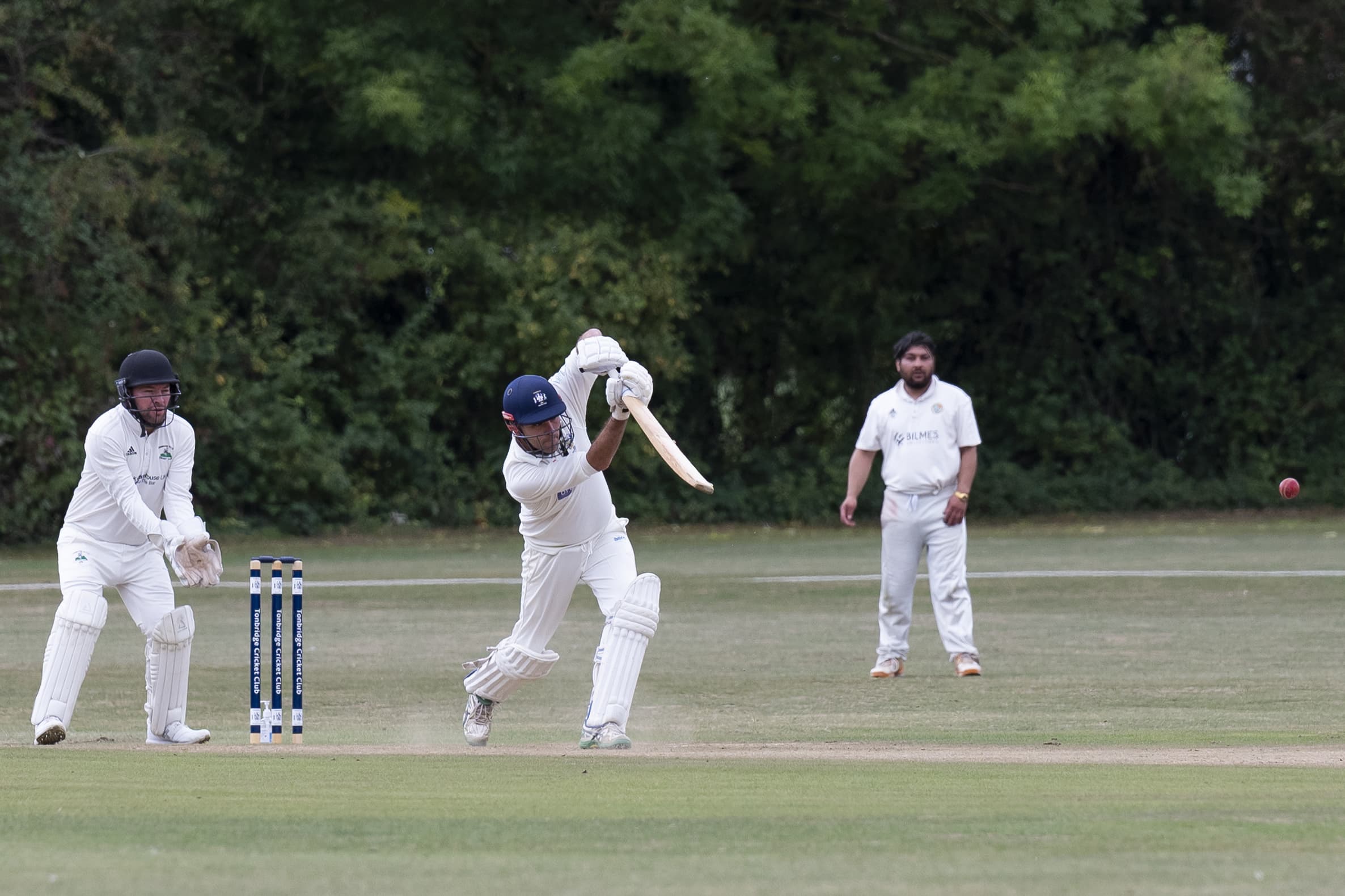
Nikon Z5, Nikkor Z 70-200mm f/2.8 VR S, 1/1600sec at f/4, ISO 200 (Captured in DX mode). Image credit: Michael Topham
Intrigued to find out if there’s any difference between the images the Z5 outputs from its 24.3MP CMOS sensor and those from the Z6’s backside illuminated (BSI) 24.5MP sensor, I conducted several comparison shots using the same lens and settings before examining them side-by-side.
Though the cameras resolve nigh on identical levels of detail at low sensitivity settings, low-light testing between ISO 6400 to ISO 102,400 revealed the back-illuminated structure of the Z6’s sensor exhibits slightly less digital noise in its images at high ISO, which allows more light to be collected at pixel level by shifting metal wiring behind the light receiving surface. This was most apparent when comparing dark shadowed regions of the same scene at 100% magnification. To be critical and having scrutinised both cameras ISO performances meticulously, I’d say the Z6’s low-light performance offers a one-stop improvement over the Z5.
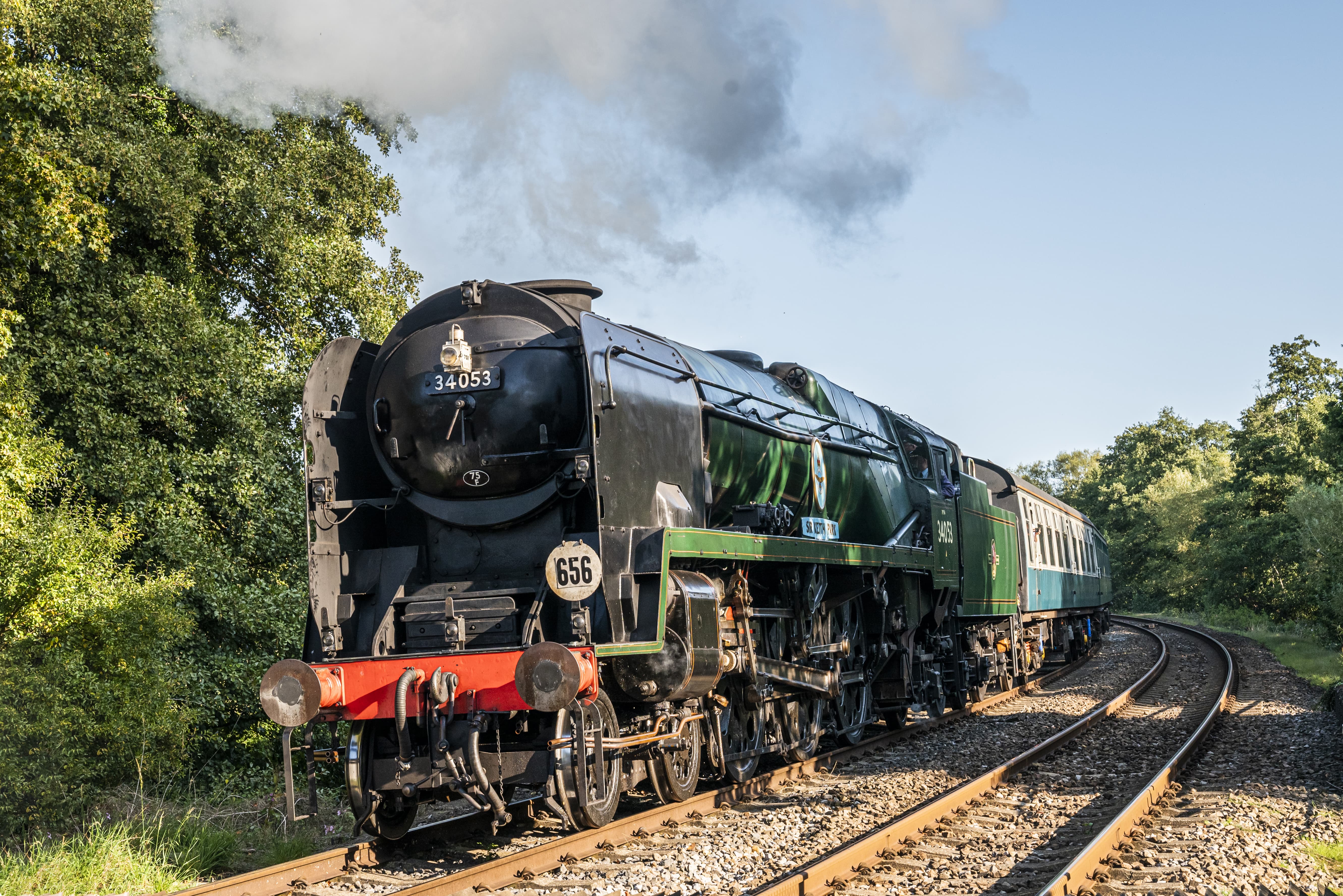
Nikon Z5, Nikkor Z 24-70mm f/4 S, 1/500sec at f/8, ISO 200. Image credit: Michael Topham
With regard to dynamic range , the Z5’s sensor provides respectable leverage at lower sensitivity settings when it comes to lifting dark shadowed regions or underexposed areas without introducing intolerable levels of noise. While the Z6 does pip the Z5 in terms of its low-light performance, the Z5’s image quality will serve aspiring photographers and those transitioning from APS-C to full-frame very well indeed.
ISO and noise
Studying our diorama results that were taken through the ISO range in a controlled shooting environment tells us that users of the Z5 can expect lovely clean, noise-free images between ISO 100 and ISO 800 when shooting in raw. Push beyond to ISO 1600 and ISO 3200 and you’ll notice noise appears, however it can be remedied by applying a small amount of noise reduction during post processing. ISO 6400 and ISO 12,800 are useable, but you’ll notice fine detail starts to be encumbered by increased noise in the latter.
While I’d be prepared to shoot up to ISO 25,600 at a push on the Z6, I’d consider ISO 12,800 to be the upper limit I’d be willing to shoot at on the Z5. With there being a green tinge and reduction in colour saturation at ISO 51,200 and ISO 102,400 (Hi1.0), I’d recommend users avoid these settings at all costs. As for the automated noise reduction that’s applied to the Z5’s JPEGs, it’s what I’d describe as fairly aggressive and does smooth out fine textures and details beyond ISO 800. With this in mind, it’s preferable to reduce the high ISO noise reduction from normal to low.
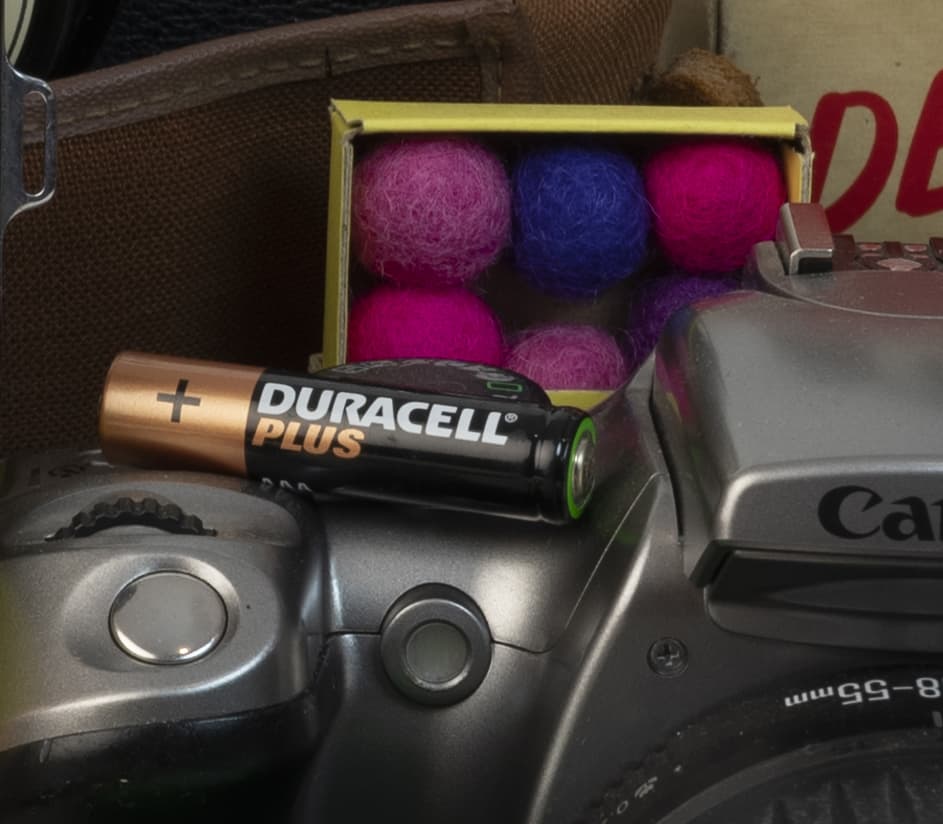
Nikon Z5, ISO 100, Raw + Adobe Camera Raw, 100% crop

Nikon Z5, ISO 400, Raw + Adobe Camera Raw, 100% crop

Nikon Z5, ISO 1600, Raw + Adobe Camera Raw, 100% crop
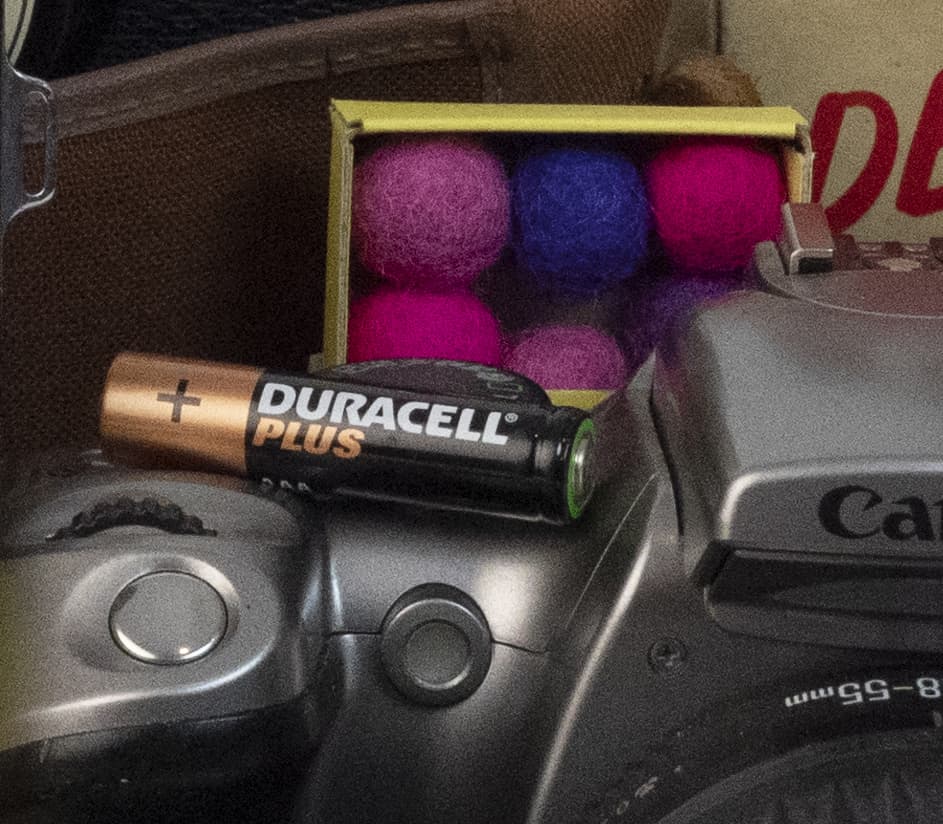
Nikon Z5, ISO 6400, Raw + Adobe Camera Raw, 100% crop
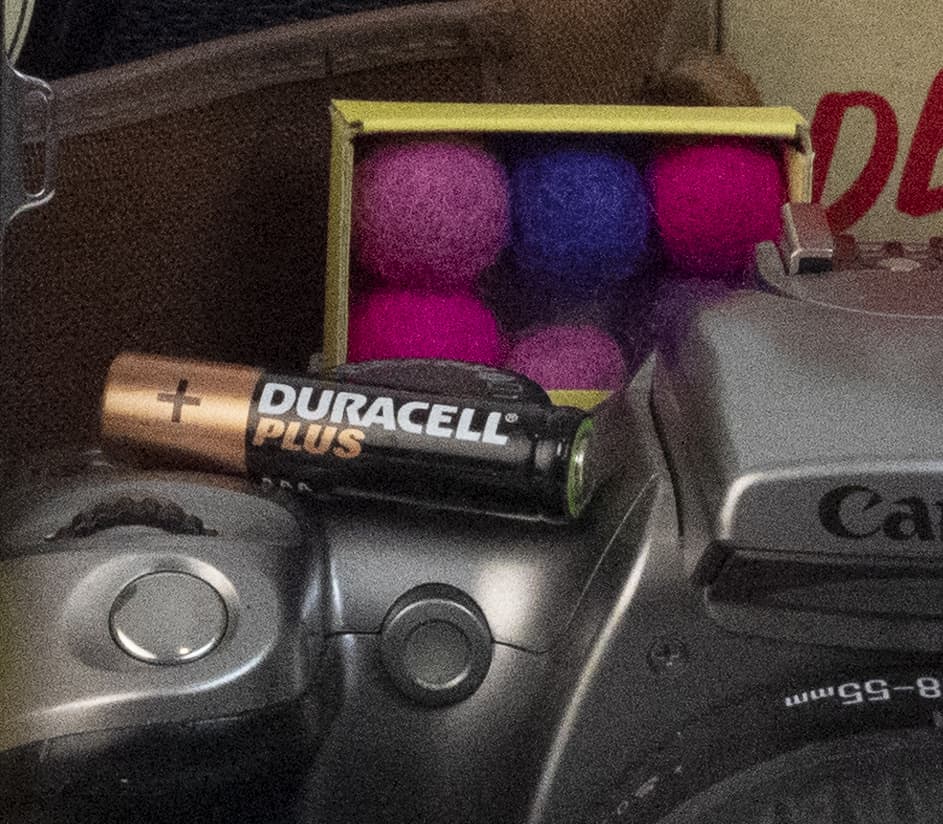
Nikon Z5, ISO 12800, Raw + Adobe Camera Raw, 100% crop
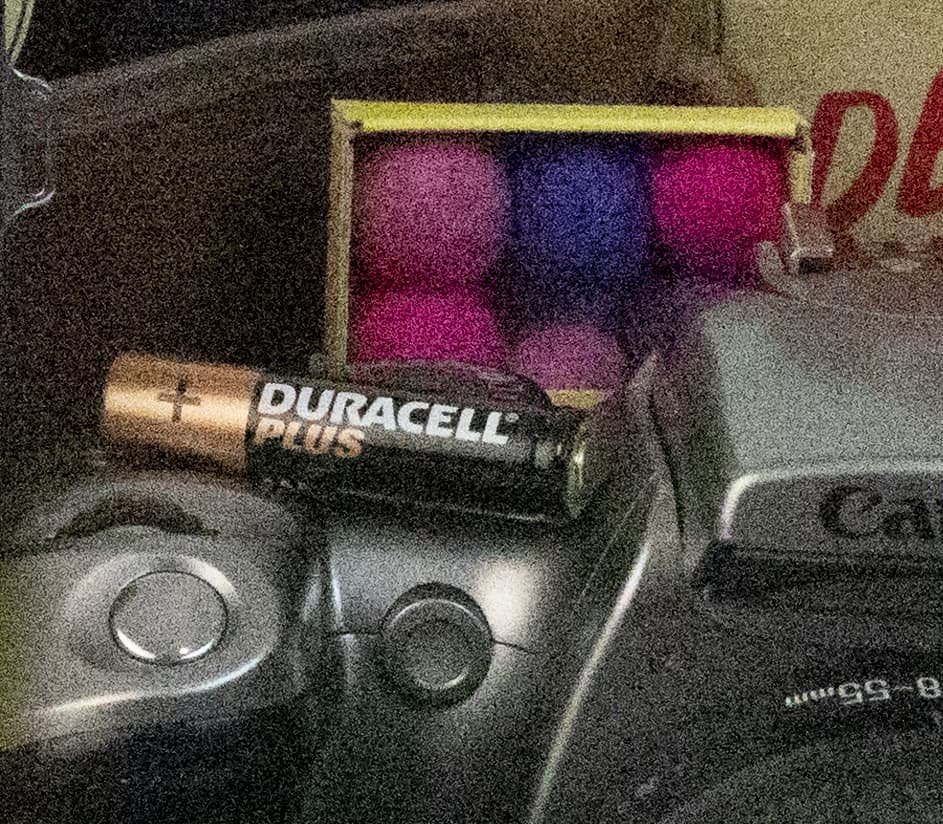
Nikon Z5, ISO 51200, Raw + Adobe Camera Raw, 100% crop
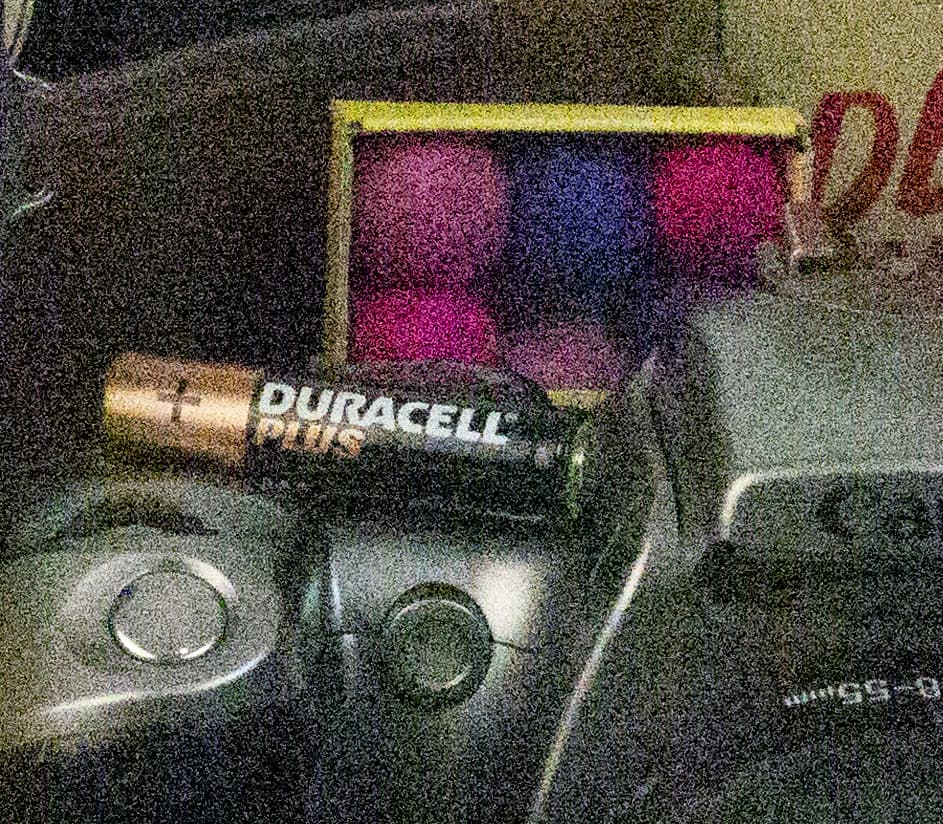
Nikon Z5, ISO 102400, Raw + Adobe Camera Raw, 100% crop
Nikon Z5 Verdict
Nikon has become a major player in the full frame mirrorless market since entering it in 2018. The original Z6 and Z7 collected numerous accolades from its critics and have gone down a storm with photographers worldwide so it’s not surprising to see Nikon taking the ‘if it ain’t broke, don’t fix it’ approach to designing its third Z-series model.

It’s not one of the most attractive mirrorless camera designs, however the Z5 brings a lot to the table for first-time full-frame buyers. Image credit: Michael Topham
Touted as an entry-level model, the Z5 is much more advanced than this basic classification suggests. It’s alike to the Z6 and Z6 II in terms of its build quality and handling, but by making a few alternations such as equipping it with a CMOS sensor, removing the top plate display and employing a lower-resolution screen, Nikon has been able to make it cheaper. Other things like the fact it accepts a pair of SD cards rather than a single costly XQD card and that it’s available as part of a bundle with a 24-50mm kit lens will appeal to photographers who feel like they’re ready to advance to full-frame.
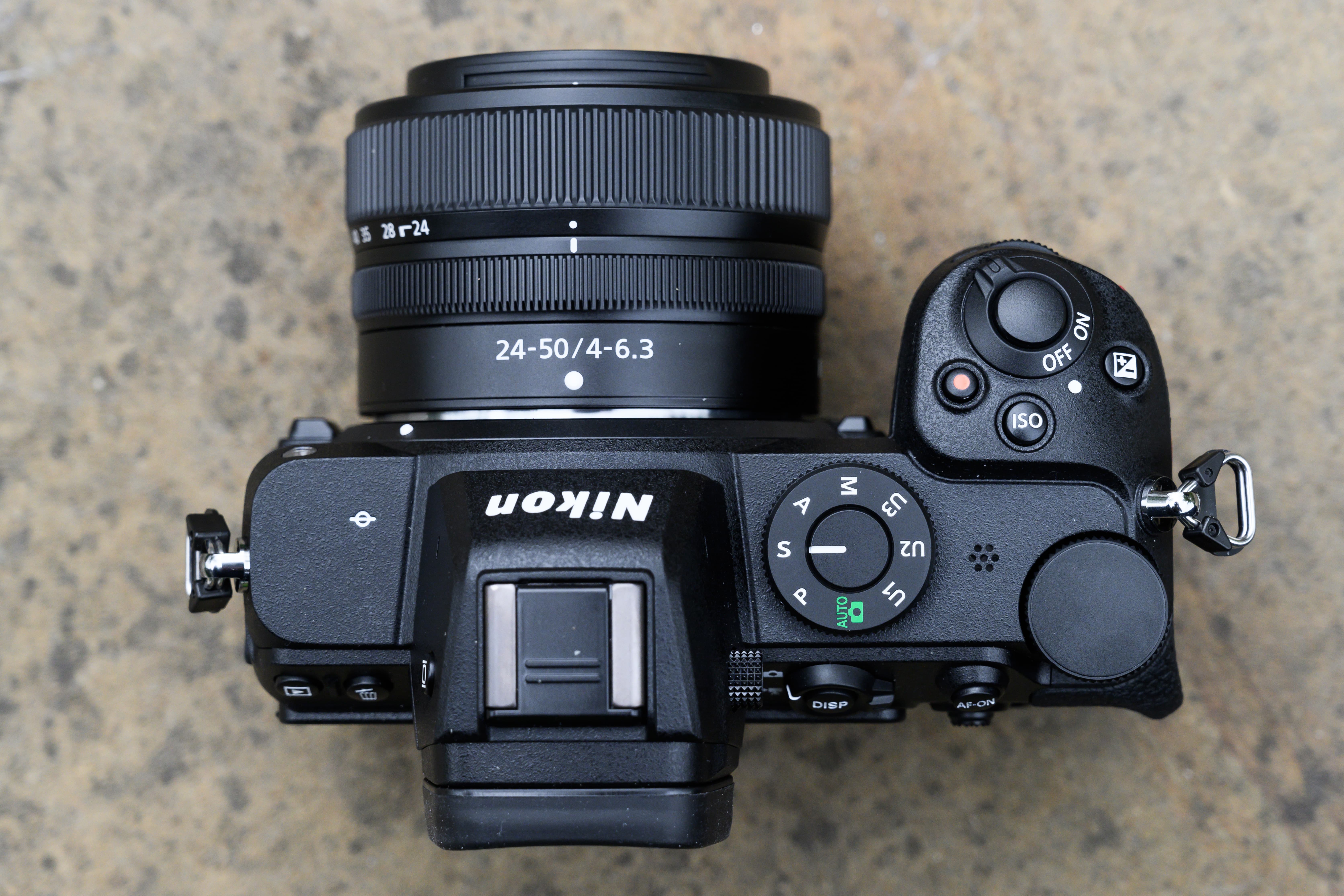
The Z5 has a fairly basic top-plate. Photographers who’d like a top-plate LCD panel that can be glanced at to view exposure and other settings will find this feature on the Nikon Z6 II and Z7 II. Image credit: Michael Topham
The bigger point, perhaps, is the price. There’s now a substantial cost difference between the Z5 and the next model up in the range the Z6 II. What’s more, current prices make the Z5 highly competitive against the Canon EOS RP (cheaper, but older and not as good) and the Panasonic Lumix S5 – excellent video capabilities but now succeeded by the Lumix S5 II .
A more contemporary rival is something like the Canon EOS R8 . While it’s a bit more expensive, this camera benefits from up-to-date features like deep-learning autofocus that can recognise and track subjects using sophisticated AI. It has a broader ISO range and a more sophisticated video spec, though the Z5 fires back with dual card slots and a much nicer viewfinder. Weighing up the pros and cons of the two makes for a tricky decision, and the older camera does better than you might expect.
What about Sony? Well, the decision to jack up the price of the A7 IV means the Z5’s closer rival is probably still the A7 III , which is similarly priced in the UK at £1,499, and a lot more expensive in the US at $1,998. The Z5 has much nicer ergonomics, while the A7 III is far superior when it comes to autofocus, particularly with Sony’s famous Eye AF. Again, a close one to call; with no obvious winner, it’s mostly down to personal preference.
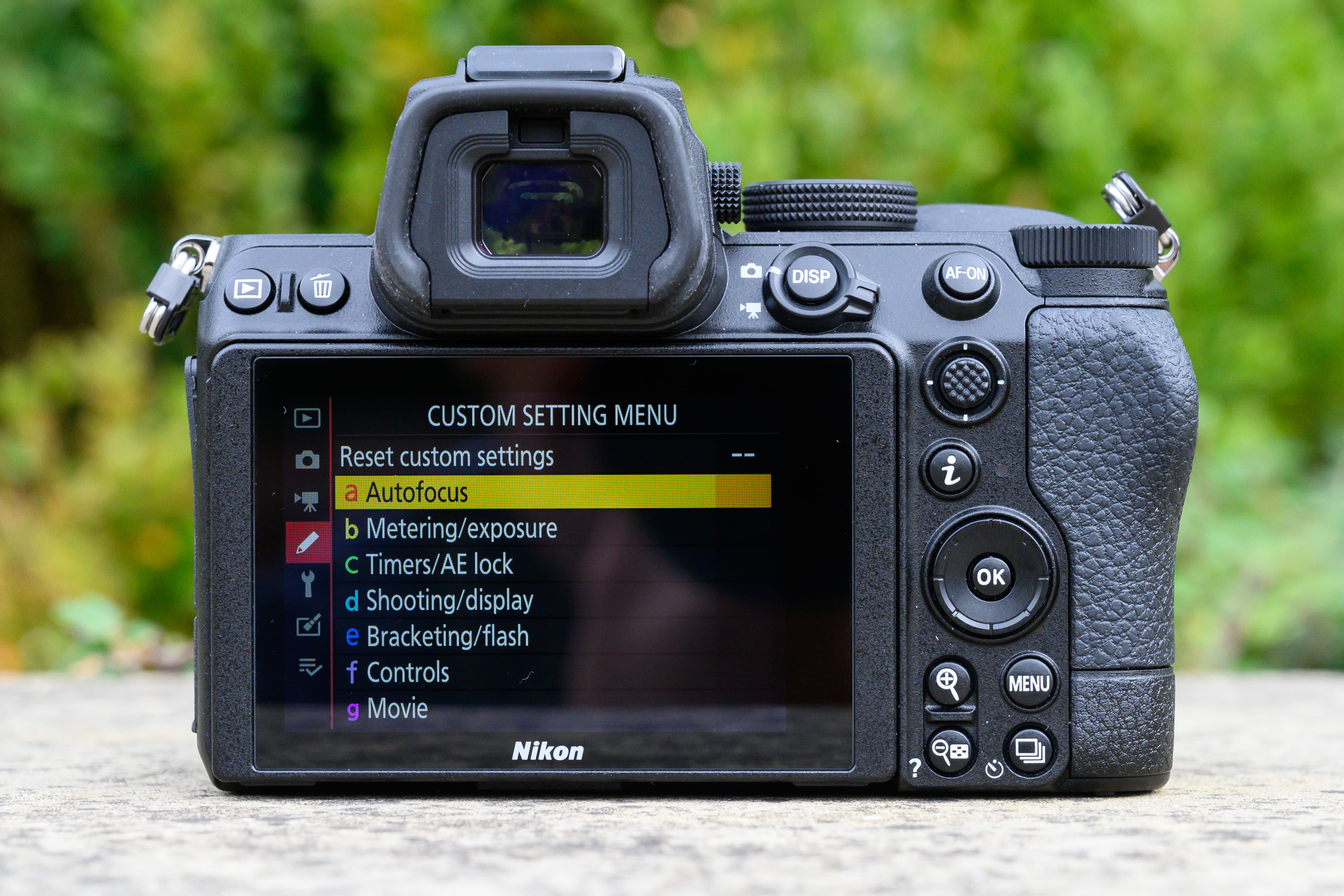
Existing Nikon users will be familiar with the menu, which is very well arranged. Image credit: Michael Topham
Still, it’s easy to get lost in the weeds of comparing cameras. Taken on its own terms, the Nikon Z5 remains a remarkably capable and reliable full-frame camera that has a quality feel, a solid set of specifications and a price point that adds further to its appeal, especially to current Nikon owners looking to upgrade. What’s more, it’s an affordable entry point into the Nikon Z ecosystem as a whole, and a steadily expanding range of rather good lenses. We’re looking forward to seeing what its successor can do, but in the meantime, the Nikon Z5 remains an excellent choice of full-frame mirrorless camera.
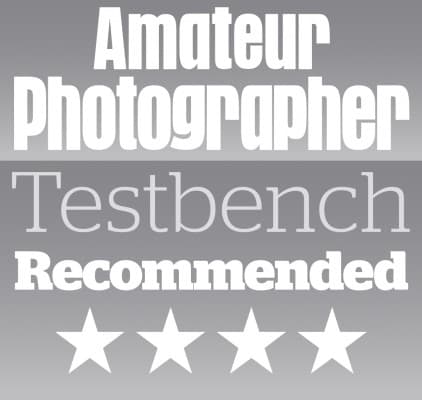
Find more great full-frame cameras in our guide to the best full-frame mirrorless cameras , or take a look at the best Nikon mirrorless cameras , as well as the best Nikon Z-mount lenses .
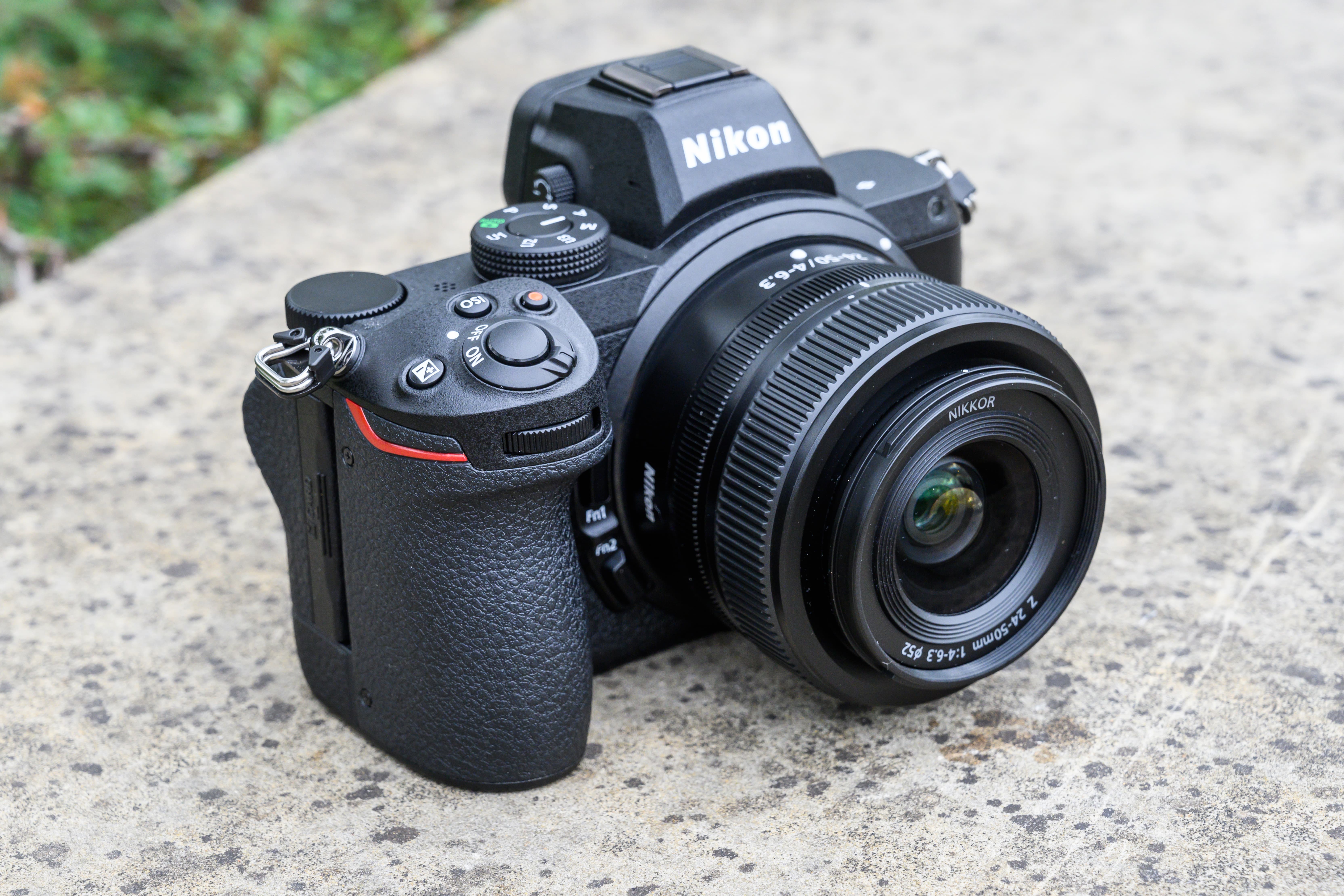
Nikon Z5 with 24-50mm kit lens. Image credit: Michael Topham
Specifications
24.3MP CMOS sensor
Output size
6016x4016 pixels
Focal length magnification
Nikon Z mount
Shutter Speeds
30-1/8000sec
160-51200 (50-102400 extended)
Metering system
TTL metering using camera image sensor
Exposure compensation
+/-5EV in 1/3 or 1/2 steps (+/-3EV movie recording)
4K UHD (30/25/24p) Full HD (60/50/30/25/24p)
0.5in, 3.69-million dot EVF
3.2in, 1040k-dot tilting touchscreen
Memory Card
Dual SD card slots (UHS-II compatible)
EN-EL15c rechargeable Li-ion battery
Battery life
470 shots (LCD), 390 shots (EVF)
134x100.5x69.5mm
675g with battery and card
Michael is based in the South East of England and enjoys documentary, landscape and railway photography. He also shoots weddings and his work can be found at www.michaeltopham.co.uk

You may also like...

April 23, 2024
Polaroid Go Generation 2 review: the little instant camera that could
The new Polaroid Go Generation 2 is the world’s smallest instant camera. We find out how it does.
by Isabella Ruffatti

GoPro HERO12 Black Review – was a new camera worth it?
The GoPro HERO12 Black is the latest camera added to GoPro’s line-up of ready for anything action cameras. But how does it fair? Jessica Miller finds out.
by Jessica Miller

ShiftCam SnapGrip review – a must-have for iPhone photographers?
Andy Westlake tries out a magnetic camera grip for smartphones, with a built-in shutter button and wireless powerbank
by Andy Westlake

Looking to improve your photography? Amateur Photographer is the magazine for you, subscribe today and pay just £26 for your first 13 issues!
No thanks, I’m not interested!
- Global Home
- Global Network

- 24.3 megapixels
- ISO 100-51200
- Eye-Detection AF
- Animal-Detection AF
- 5.0-stop in-camera VR
- Silent mode
- Quad-VGA EVF
- 3.2-in. tilting monitor
- USB power delivery
- Weather sealing
- Nikon FX-format CMOS image sensor featuring 24.3 effective megapixels and ISO 100-51200.
- 273-point * 1 AF system offering accurate focus across 90% of the frame both horizontally and vertically while allowing touch AF during live view.
- Eye-Detection AF * 2 and Animal-Detection AF * 3 that automatically detects and tracks the eyes of both human subjects and pets, realizing impressive portraits.
- Powerful in-camera VR that achieves an effect equivalent to a shutter speed of 5.0 stops * 4 faster, compensating vibration in five directions.
- 20 Creative Picture Controls with customizable effect level adjustments, all of which can be previewed in real time and applied to both photos and videos.
- 3690k-dot Quad VGA EVF with the combination of an ultra-high resolution OLED and Nikon's specially designed optics, providing a clear and comfortable view.
- Large and beautiful tilting touch screen monitor for intuitive operation.
- The new USB power delivery option supplies power from a portable charger * 5 while shooting to ensure continuous recording of video or time-lapse movies without worries.
- 4K UHD video * 6 delivering beautiful and sharp footage while letting you touch to focus on the camera monitor for smooth transition between subjects.
- *1 In photo mode, FX-format with single-point AF.
- *2 Available in photo mode when using auto-area AF.
- *3 When using auto-area AF. During movie recording, the camera will recognize animals' faces.
- *4 Based on CIPA Standards. This value is achieved when the NIKKOR Z 24-70mm f/4 S is attached, with zoom set at the maximum telephoto position.
- *5 Anker PowerCore+ 26800 PD 45W is recommended.
- *6 When using this mode, the frame is cropped approx. x1.7.
Specifications
Effective pixels, image sensor, white balance, wi-fi/bluetooth, power source, dimensions/weight, operating environment, supplied accessories.
- The SD, SDHC and SDXC logos are trademarks of SD-3C, LLC.
- HDMI, the HDMI logo and High-Definition Multimedia Interface are trademarks or registered trademarks of HDMI Licensing LLC.
- Wi-Fi ® and the Wi-Fi logo are trademarks or registered trademarks of the Wi-Fi Alliance ® .
- The Bluetooth ® word mark and logos are registered trademarks owned by Bluetooth SIG, Inc. and any use of such marks by Nikon Corporation is under license.
- Other products and brand names are trademarks or registered trademarks of their respective companies.
- Specifications are subject to change without notice.
Mirrorless Cameras
Nikon Z5 vs Z50: even the names sound (nearly) the same, so which is the best?
The Nikon Z5 is Nikon's most affordable full-frame mirrorless camera. How does it compare with the APS-C format Z50?
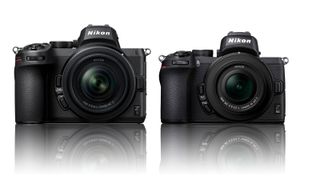
2. Viewfinder
- 4. Autofocus
5. Stabilisation
7. continuous shooting, 10. battery.
- Conclusions
Nikon ’s Z5 is an attractively affordable full-frame mirrorless camera with a great array of features, but you can save yourself a significant slice of cash by opting for the APS-C (DX) format Z50 instead.
• Best Nikon camera • Nikon Z5 review • Nikon Z50 review • Best mirrorless cameras • Best Nikon Z lenses
While both cameras have Nikon’s Z mount, which means they can accept the same lenses, there’s a 1.5x crop factor applied with the Z50 because of the smaller sensor. However, opting for the Z50 means that you can save more money by going for Nikon’s DX format lenses and they are smaller and lighter than their full-frame counterparts. It all adds up to make the Z50 a tempting alternative to the Z5.
In this post, we’ll take a look at the key differences between the Nikon Z5 and Z50 so you can decide which model best suits you and your photography.
• Also see: Nikon Z30 vs Nikon Z50 vs Nikon Z fc
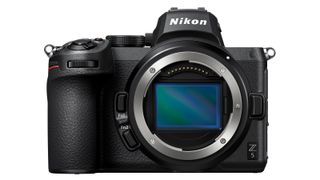
• Nikon Z5: 24.3MP Full-frame (35.9 x 23.9mm) CMOS • Nikon Z50: 20.9MP APS-C (23.5 x 15.7mm) CMOS
As we’ve already mentioned, the Z5 has a full-frame sensor whereas the Z50 has an APS-C or DX format chip. This means that any full-frame lens mounted on the Z50 looks to have a focal length that is around 1.5x longer than when it’s on the Z5. However, when a DX format lens is mounted on the Z5, it crops the image so that it matches what you see with the Z50.
The Z50 also has a lower resolution than the Z5, 20.9MP rather than 24.3MP. This helps to maintain the size of the pixels despite the smaller sensor size. Consequently, both cameras have the same native sensitivity range of ISO 100-51,200 however, the Z50 has a higher maximum expansion value of ISO 204,800 while the Z5 tops out at ISO 102,400 yet has lower settings going down to ISO 50.
• Nikon Z5: 0.5-inch 3,690,000-dot OLED • Nikon Z50: 0.39-inch 2,360,000-dot OLED
As usual with an APS-C format camera, the Z50 has a physically smaller and lower resolution electronic viewfinder (EVF) than the full-frame Z5. This means that while the Z50’s EVF is more than adequate, the Z5’s gives a more comfortable viewing experience.
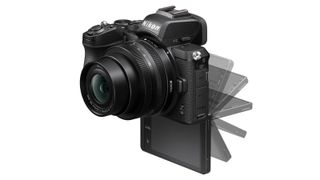
• Nikon Z5: 3.2-inch 1,040,000-dot tilting touch-screen • Nikon Z50: 3.2-inch 1,040,000-dot tilting touch-screen
The basic specifications of the screens don’t reveal a key difference between the Z50 and Z5. While they are both tilting screens, the Z5’s screen can only be tipped up for viewing from below head-height, or down for viewing from above head-head, it can’t tip down through 180° like the Z50’s to enable it to be seen from in front of the camera. This makes the Z50 a better choice for anyone interested in shooting selfies or vlogging. However, it’s important to note that you’ll need a special bracket to hold the camera if you plan on mounting the camera on a tripod while viewing the screen from the front.

4. Autofocus system
• Nikon Z5: Hybrid with 273 points • Nikon Z50: Hybrid with 209 points
While the Z50 has fewer AF points because of the smaller sensor size, they still cover 90% of the imaging area, just like the Z5. This means that the cameras can track subjects close to the corners of the frame.
The two cameras also offer Face and eye detection in stills mode and it can be set to look for human or animal eyes.

• Nikon Z5: 5-axis to 5EV • Nikon Z50: Lens-based
Like Nikon’s other full-frame mirrorless cameras, the Z5 has in-body stabilization (IBIS). This operates across 5 axis and offers a shutter speed compensation factor of up to 5 EV, it also works with any mounted lens.
The Z50 doesn’t have in-body stabilization but it can benefit from Nikon’s VR stabilization system built into some lenses. That’s something to keep in mind when selecting lenses to go with the camera.
See also: Best lenses for Nikon Z5 • Best lenses for Nikon Z50
6. Video capability
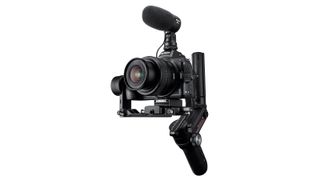
• Nikon Z5: 4K (3840 x 2160) at up to 30p with 1.7x crop, Full-HD at up to 60p • Nikon Z50: 4K (3840 x 2160) at up to 30p, Full-HD at up to 120p
Although both cameras are capable of shooting 4K video, there’s a heavy (1.7X) crop applied to the footage shot on the Z5. This means that a full-frame lens looks 1.7x longer than it does in stills mode. Meanwhile, the Z50 shoots using the full width of its sensor.
The Z50 also has the advantage of being able to shoot Full-HD footage at ups 120fps while the Z5 only goes up to 60fps.
Both cameras have a 3.5mm input for an external microphone, but only the Z5 offers a port for plugging in a set of headphones.
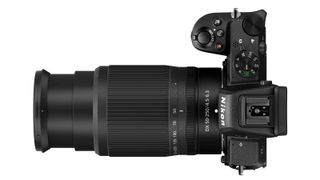
• Nikon Z5: 4.5fps • Nikon Z50: 11fps
The Z50 is a clear winner for anyone interested in shooting split-second action as it has a maximum continuous shooting rate of 11fps with full autofocus and metering capability. The Z5’s maximum rate is an underwhelming 4.5fps.
Despite its faster shooting rate, the Z50’s maximum shutter speed is 1/4000sec whereas the Z5’s is 1/8000sec.
8. Size and weight
• Nikon Z5: 134 x 100.5 x 69.5mm, 675g with battery and memory card • Nikon Z50: 126.5 x 93.5 x 60mm, 450g with battery and memory card
Using a smaller sensor enables the Z50 to be smaller and lighter than the Z5. This becomes particularly noticeable if you pair the Z50 with DX lenses, especially with compact optics like the Nikkor Z DX 16-50mm f/3.5-6.3 VR . Consequently, the Z50 makes a nice choice for travel photography or if you want to carry the camera over long distances on foot.
It’s worth noting at this point that despite its smaller size and weight, the Z50 features a built-in pop-up flash whereas the Z5 does not.
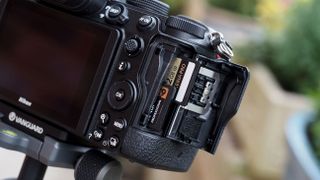
• Nikon Z5: Dual SD/SDHC/SDXC UHS-II slots • Nikon Z50: Single SD/SDHC/SDXC UHS-I slot
It seems rather at odds with its lower maximum continuous shooting rate and poorer video credentials, but the Z5 has two card slots that are both compatible with the faster UHS-II media. The Z50 has just one slot and it’s UHS-I compliant.
The dual card slots give extra storage capacity or one card can be used as a back-up for the other. Alternatively, stills can be saved to one card and video to the other.
• Nikon Z5: EN-EL15c rechargeable Li-ion • Nikon Z50: EN-EL25 rechargeable Li-ion
The Z5 uses a larger battery than the Z50 and in CIPA testing it can capture 470 images when the rear screen is used to compose shots or 390 images with the electronic viewfinder. The Z50’s battery lasts for around 300 shots, which means a spare or two is pretty much essential for a day out with the camera.
Nikon Z5 v Z50: conclusions
While a full-frame camera is attractive because of its enhanced image quality and the ability to restrict depth of field more at any given aperture, there are some areas where the Z50 comes out on top over the Z5.
The Z50’s maximum continuous shooting rate is almost 3x that of the Z5, for example, and the framing doesn’t change when you switch from shooting stills to recording 4K video. In addition, the Z50’s screen has a greater range of movement that is helpful when you’re shooting selfies or you’re vlogging. The Z50 is also smaller and lighter, and although this comes with the loss of a second memory card slot and a headphone port, you gain a small pop-up flash.
Those with larger hands, or who want to build up a collection of full-frame lenses with an eye of a future camera upgrade, however, may wish to opt for the Z5. Currently, Nikon offers a much wider range of lenses for the full frame Nikon Z series than it does for the smaller format Nikon Z50.
How we test cameras
Why you can trust Digital Camera World Our expert reviewers spend hours testing and comparing products and services so you can choose the best for you. Find out how we test.
We test mirrorless and DSLR cameras both in real-world shooting scenarios and in carefully controlled lab conditions. Our lab tests measure resolution, dynamic range and signal to noise ratio. Resolution is measured using ISO resolution charts, dynamic range is measured using DxO Analyzer test equipment and DxO Analyzer is also used for noise analysis across the camera's ISO range. We use these real-world testing and lab results to inform our comments in buying guides. For compact cameras and phones, we judge on real world handling and photographic results alone.
Thank you for reading 5 articles this month* Join now for unlimited access
Enjoy your first month for just £1 / $1 / €1
*Read 5 free articles per month without a subscription
Join now for unlimited access
Try first month for just £1 / $1 / €1
Get the Digital Camera World Newsletter
The best camera deals, reviews, product advice, and unmissable photography news, direct to your inbox!

Angela has been testing camera gear from all the major manufacturers since January 2004 and has been Amateur Photographer’s Technical Editor and Head of Testing for Future Publishing’s photography portfolio ( Digital Camera Magazine , PhotoPlus: The Canon Magazine , N-Photo , Practical Photoshop , Photography Week and Professional Photography magazines, as well as the Digital Camera World and TechRadar websites). She is the founder of SheClicks - a community group that encourages and supports female photographers.
Related articles

Covering the Nikon Z Mount Cameras and Lenses
Site Navigation [Skip]
- Z System User
- 2023 News/Views
- 2022 News/Views
- 2021 News/Views
- 2020 News/Views
- Concise Z Reviews
- Nikon Z5 Review
- Nikon Z6 Review
- Nikon Z6 II Review
- Nikon Z7 Review
- NIkon Z7 II Review
- Nikon Z8 Review
- Nikon Z9 Review
- Nikon Z30 Review
- Nikon Z50 Review
- Nikon Zfc Review
- Nikon Zf Review
- Nikon Z5 Specs
- Nikon Z6 Specs
- Nikon Z6 II Specs
- Nikon Z7 Specs
- Nikon Z7 II Specs
- Nikon Z8 Specs
- Nikon Z9 Specs
- Nikon Zf Specs
- Nikon Z30 Specs
- Nikon Z50 Specs
- Nikon Zfc Specs
- Where are Z's Made?
- The Z9 in Africa Blog
- A Nikon Z Mirrorless Safari
- Smaller and Lighter, or Not?
- Comparing Nikon Z to Sony A
- Recommended Z50 Kit
- Thom's Zfc Quick Advice
- The Z System Wish List
- Using a Z as a Webcam
- Z System Upgrade Advice
- Z Warranties/Repairs
- About Z-mount Lenses
- FX versus other mounts
- DX versus other mounts
- Categorizing The Z Nikkors
- Lens Sizes and Nicknames
- Travel Lens Combos (2022)
The Second Safari Lens
- Rational Z DX Lens Kits
- Macro Lens Info
- Missing Patented Lenses
- More About VR
- Clearing Up Aperture Confusion
- Best Telephoto Options in the Z Mount
- 20mm f/1.8 S Review
- 24mm f/1.8 S Review
- 28mm f/2.8 Review
- 35mm f/1.8 S Review
- 40mm f/2 Review
- 50mm f/1.2 S Review
- 50mm f/1.8 S Review
- 50mm f/2.8 MC Review
- 85mm f/1.2 S Review
- 85mm f/1.8 S Review
- 105mm f/2.8 VR S Review
- Nikon 135mm f/1.8 Review
- 14-24mm f/2.8 S Review
- 14-30mm f/4 S Review
- 17-28mm f/2.8 Review
- 24-50mm f/4-6.3 Review
- 24-70mm f/2.8 S Review
- 24-70mm f/4 S Review
- 24-120mm f/4 S Review
- 24-200mm f/4-6.3 Review
- 28-75mm f/2.8 Review
- 70-180mm f/2.8 Review
- 70-200mm f/2.8 VR S Review
- 100-400mm f/4.5-5.6 VR S Review
- 180-600mm f/5.6-6.3 VR Review
- 400mm f/2.8 TC VR S Review
- 400mm f/4.5 VR S Review
- 800mm f/6.3 PF VR S Review
- 12-28mm f/3.5-5.6 DX Review
- 16-50mm f/3.5-6.3 DX Review
- 18-140mm f/3.5-6.3 DX Review
- 50-250mm f/4.5-6.3 DX Review
- Nikkor Zoom Lens Optical Designs
- 14-24mm f/2.8 S
- 14-30mm f/4 S
- 17-28mm f/2.8
- 24-50mm f/4-6.3
- 24-70mm f/2.8 S
- 24-70mm f/4 S
- 24-120mm f/4 S
- 24-200mm f/4-6.3 VR
- 28-75mm f/2.8
- 28-400mm f/4-8
- 70-180mm f/2.8
- 70-200mm f/2.8 VR S
- 100-400mm f/4-5.6 VR S
- 180-600mm f/5.6-6.3 VR
- Nikkor Prime Lens Optical Designs
- 20mm f/1.8 S
- 24mm f/1.8 S
- 35mm f/1.8 S
- 50mm f/1.2 S
- 50mm f/1.8 S
- 50mm f/2.8 macro
- 58mm f/0.95 NOCT
- 85mm f/1.2 S
- 85mm f/1.8 S
- 105mm f/2.8 VR S macro
- 135mm f/1.8 S
- 400mm f/2.8 TC VR S
- 400mm f/4.5 VR S
- 600mm f/4 TC VR S
- 600mm f/6/3 PF VR S
- 800mm f/6.3 PF VR S
- Nikkor DX Lens Optical Designs
- 12-28mm VR PZ VR DX
- 16-50mm f/3.5-6.3 VR DX
- 24mm f/1.7 DX
- 18-140mm f/3.5-6.3 VR DX
- 50-250mm f/4.5-6.3 VR DX
- Lenses with Firmware Updates
- Nikkor Lens Filter Sizes
- Where Are Z Lenses Made?
- 7Artisans 60mm f/2.8 MF
- Laowa 9mm f/2.8 MF
- Laowa 25mm f/2.8 macro MF
- Meike 25mm f/1.8 MF
- Meike 50mm f/1.7 MF
- Opteka 420-800mm MF
- Tamron 70-300mm f/4.5-6.3 Lens Review
- TTartisans 11mm f/2.8 MF
- Viltrox 23mm f/1.4 AF
- Viltrox 56mm f/1.4 AF
- Viltrox 85mm f/1.8 AF
- Voigtlander 40mm f/1.2 Lens Review
- Voigtlander 65mm f/2 Macro Lens Review
- 10mm f/4 DX MF
- 50mm f/1.8 AF
- 55mm f/1.4 AF DX
- 85mm f/1.8 AF
- 16mm f/1.4 AF DX
- 30mm f/1.4 AF DX
- 56mm f/1.4 AF DX
- 27mm f/2.8 AF
- 32mm f/2.8 AF
- 35mm f/1.8 AF DX
- 56mm f/1.8 AF DX
- 13mm f/1.4 AF DX
- 20mm f/2.8 AF
- 23mm f/1.4 AF
- 24mm f/1.8 AF
- 27mm f/1.2 DX
- Viltrox 28mm f/1.8
- 33mm f/1.4 AF
- 35mm f/1.8 AF
- 56mm f/1.4 AF
- Viltrox 75mm f/1.2
- 7.5mm f/2.8 fishehe MF
- 9mm f/5.6 MF
- 10mm f/2.8 fisheye MF
- 12mm f/2.8 MF
- 15mm f/4 MF
- 18mm f/6.3 MF
- 25mm f/0.95
- 35mm f/1.2 MF
- 35mm f/0.95 MF
- 35mm f/1.4 MF
- 35mm f/5.6 MF
- 50mm f/1.05 MF
- 55mm f/1.4 MF DX
- 60mm f/2.8 MF Macro
- 60mm f/2.8 MF macro
- 12mm f/2 MF DX
- 50mm f/1.1 MF
- 60mm f/2.8 macro MF
- 12mm f/5.6 MF DX
- 10mm f/8 MF
- 20-70mm t/2.9
- 14mm f/4.5 MF
- 18mm f/8 macro MF DX
- 35mm f/1.8 MF
- 50mm f/1.4 Tilt MF
- 18mm f/8 MF
- 11mm t/4.3 MF
- 15mm t/2.6 MF
- 45mm t/1.5 MF
- 150mm t/3 MF macro
- 55mm f/1.4 MF
- 71mm f/1.1 DX MF
- 24mm f/2.4 MF
- 35mm f/2.4 MF
- 50mm f/2.4 MF
- 75mm f/2.4 MF
- 90mm f/2.4 MF
- 4mm f/2.8 fisheye DX MF
- 7.5mm t/2.9 MF
- Laowa 8-16mm f/3.5-5 C-Dreamer
- 9mm f/2.8 DX MF
- 10-18mm f/4.5-5.6 MF
- 11mm f/4.5 MF
- Laowa 12-24mm f/5.6
- 14mm f/4 MF
- 15mm f/2 FX MF
- 15mm f/2 MF Shift
- 20mm f/4 MF Shift
- 24mm f/14 macro probe MF
- 25mm f/2.8 MF Macro
- 33mm f/0.95 DX MF
- 35mm f/0.95 FX MF
- 58mm f/2.8 macro DX MF
- 65mm f/2.8 macro DX MF
- 85mm f/5.6 macro (MF)
- 100mm f/2.8 MF Macro
- 6.5mm f/2 fisheye DX MF
- 10mm f/2 MF
- 12mm f/2 MF
- 25mm f/0.95 MF
- 25mm f/1.8 MF
- 35mm f/1.7 MF
- 50mm f/0.95 MF
- 50mm f/1.2 MF
- 50mm f/1.7 MF
- 30mm f/3.5 MF
- 50mm f/2.8 MF
- Meyer-Optik 58mm f/1.5 II Biotar
- 58mm f/1.9 MF
- Meyer-Optik 75mm f/1.5 II Biotar
- 75mm f/1.9 MF
- 100mm f/2.8 MF
- 85mm f/1.2 MF
- 135mm f/2.5 MF
- 9mm f/2.8 MF
- 420-800mm f/8.3 MF
- 7.5mm f/2.8 MF fisheye
- 60mm f/2.8 MF
- 14mm f/2.8 MF
- 85mm f/1.4 MF
- 24mm f/2.8 1.33x MF
- 75mm f/1.8 MF anamorphic
- 7.5mm f/2 fisheye DX MF
- 10mm f/2 MF DX
- 11mm f/2.8 MF
- 17mm f/1.4 MF
- 21mm f/1.5 MF
- 25mm f/2 MF
- 40mm f/2.8 macro MF
- 50mm f/0.95 MF DX
- 50mm f/1.2 MF DX
- 50mm f/2 MF
- 20mm f/1.8 MF
- 15mm f/4.5 MF
- 23mm f/1.2 MF
- 35mm f/2 MF
- 40mm f/1.2 MF
- 50mm f/1 MF
- Zhongyi Optics
- FTZ Adapter Compatibility
- Available Automated F-Mount Adapters
- Sigma FTZ Compatibility
- Tamron FTZ Compatibility
- Tokina FTZ Compatibility
- The Ideal FTZ Adapter Wish List
- Nikon TC-1.4x Teleconverter
- Nikon TC-2x Teleconverter
- A Teleconverter Assessment
- Other Z-Mount Adapters
- Speed Adapters
- Extension Tubes
- Stitching Z Simple Way
- Filters Specifically for Z Lenses
- Tripod Collars and Feet
- MB-N10 Grip
- The Better Case of the MB-N11
- To Cover Up or Not?
- Z6/Z7 Batteries
- Zf, Z5, Z6 II, Z7 II and Z8 Batteries
- Z30, Z50, and Zfc Batteries
- Z9 Batteries
- Battery Packs and Vertical Grips
- Z5/Z6/Z7 Brackets/Plates
- Brackets and Plates for the Nikon Z8
- Brackets and Plates for the Nikon Z9
- DX Brackets/Plates
- Brackets, Plates, and Grip for the Zf
- Cage Your Z
- The Card Situation
- CFExpress Cards
- Nikon Flash for Z Cameras
- Filters (body/FTZ)
- Wired/Wireless Remotes
- Vertical Grips
- Replacement Parts
- Nikon Software Versions
- Thom's Z-mount Bags
- Nikon Z5 Guide
- Nikon Z6/Z7 Guide
- Nikon Z6 II/Z7 II Guide
- Nikon Z8 Guide
- Nikon Z9 Guide
- Nikon Z50 Guide
- Configuring/Using Z f
- Configuring/Using Z fc
- Are your books just rewrites of the manual?
- Why can't I find your works in bookstores?
- Why can't I find your works in the Kindle (Nook, Apple, Android) store?
- Do you ever update your works?
- What do your books work on?
- Can I copy the eBook file to my other computers?
- What Happens if I Lose my Downloaded File?
- How Do I Get Updates for my Book?
- Can I Buy a Printed Copy of Your Books?
- Mission Statement
- Code of Ethics
- Privacy Info
Nikon has a pretty incredible telephoto Z-mount lens lineup already. Unfortunately the lineup is incredible enough to provoke a lot of buying angst among users. There’s a lot of nuance that has to be juggled to make good buying/using decisions.
I’m a wildlife photographer much of the time. I’ve already written several times that the 400mm f/2.8 TC VR S is my choice for “long lens.” Given my usual access to animals and my extreme travel, I find that lens is the best choice for me in balancing a lot of different variables. For others, the 600mm f/4 TC VR S might be the better choice. But the 400 gives me 400/560/840mm at the flip of switch or button on the Z8 or Z9 (the longer lens provides 600/750/1125mm).
The question then becomes what do I use at the “short end” for my second body on safari. Most recently, that’s been a Tamron 35-150mm f/2-2.8, though that leaves me a gap from 150 to 400mm. However, I tend towards favoring subject isolation capability and edge of day light needs, thus my two fast lens choices.
If you’re picking a 400mm or 600mm lens as your primary lens for safari, you have quite a few options for a secondary lens. Some users tend towards only using one body, or not having a Z8 or Z9 in the first place, thus have very different needs (which are likely completely filled by the 100-400mm f/4.5-5.6 VR S or 180-600mm f/5.6-6.3 VR). Either way, it’s important to understand what we have that’s native Z-mount that’s available as a second lens for your second body.
I assume that if you have an F-mount lens, you can already evaluate how that works; it would be rare that a Z System user buys a new F-mount lens these days: (1) you end up extending the length of the lens via the FTZ adapter; (2) the F-mount lenses other than the PF lenses tend to be heavier; and (3) the F-mount lenses are not holding vaue at all, due to how many are being traded in. If you already have an F-mount lens, great. If you want to dip into the used pool to pick up a fantastic F-mount exotic at a low price, that’s great too. But for the purposes of this article I’m going to stick to Z-mount lenses, and in particular, FX ones.
I make the assumption that you want flexibility in your second lens on safari. Normally, this lens is on your second body, and ready for when the action gets closer to you. Or when you're dealing with large mammals, such as elephants or giraffes, at modest distance. Some also want this lens to be useful for potential scenic imagery, as well.
Here are the primary second lens choices for safari in the Z-mount:
- Nikkor 24-120mm f/4 S — My teaching assistant uses this and is happy with what it provides (his primary lens is a 400mm f/4.5 VR S or sometimes 100-400mm f/4.5-5.6 VR S). One aspect of the 24-120mm f/4 S lens that isn't often mentioned is its ability to focus close (15", or 35cm). That provides another sometimes useful aspect on safari, for instance when you're in a mokoro photographing reed frogs. My only comment is that you wouldn't pair this mid-range zoom lens with a 600mm or longer primary optic, as that just leaves you too much “focal length gap."
- Nikkor 24-200mm f/4-6.3 VR — This superzoom sounds like a good choice at first glance, but it is clearly the worst possible choice once you're in the true telephoto range. Moreover, like all superzooms, the 24-200mm f/4-6.3 VR loses some focal length as you focus closer. You'll also note that the f/6.3 side is slower than the other lenses I put in this group. One reason you sometimes pick up your second body and lens is because the light is disappearing at the end of the day and you're not able to hold subjects with your long lens due to aperture.
- Tamron 35-150mm f/2-2.8 — This is my usual second lens (again, my primary is the 400mm f/2.8 TC VR S). I'm less worried about the wide scenic, but more worried about subject isolation, which is the reason why the previous lens isn't the one I carry. I've never been unhappy with the results from the Tamron 35-150mm f/2-2.8, and now that we have a native Z-mount version of it—the original was a Sony E-mount one that I used on a Megadap adapter—I can heartily recommend it to all.
- Nikkor 70-180mm f/2.8 — On my last trip I brought this lens with me (as a second to the 180-600mm f/5.6-6.3 VR), and I'm going to say something bold: it's a better choice than the 70-200mm f/2.8 VR S. No, it's not sharper in the corners. Yes, it can flare more. No, the bokeh isn't quite as well handled. But those aren't the big things you're typically worried about on safari. Here's the reason why I give it a strong nod: it focuses down to essentially macro levels (1:2; though don't place focus in the corners; keep focus centered). It travels smaller and lighter, it has perfectly fine DX-boundary sharpness, and it has that close focus ability. The "drawback" that keeps some from this lens is that it doesn't have VR. Frankly, the sensor VR is good enough to handle 180mm decently, and you're not likely pushing down into slower shutter speeds on safari, anyway.
- Nikkor 70-200mm f/2.8 VR S — Absolutely nothing wrong with this lens. As 70-200's go, it's right there at the top of the heap. But it's surprisingly the size and weight of the F-mount version, and the thing we're all clamoring for these days is to make our overall kit smaller and lighter. The 70-200mm f/2.8 VR S doesn't do that ;~). I'm perfectly happy with the 70-200mm f/2.8 VR S, but for the size and weight I like the Tamron 35-150mm f/2-2.8 better. And if I need smaller/lighter, the 70-180mm f/2.8 is the clearer choice for me.
- Tamron 70-300mm f/4.5-6.3 — Price and focal length made you look. It's not a terrible lens, but this falls into the 24-200mm type classification: you can do better.
- Nikkor 100-400mm f/4.5-5.6 VR S — If you're using a really long primary lens such as the 600mm or 800mm, you might want to give up a bit on the wider side and get something that covers more of the telephoto focal lenth gap. The 100-400mm f/4.5-5.6 VR S would be that lens. We were all excited and happy when this zoom came out, though it's been a bit eclipsed by subsequent offerings in different ways. Still, it focuses close and it's still remarkably good.
As you probably noted in those bullets, a couple of things come up: (1) what lens are you pairing the second one with?; and (2) does your second lens have more flexibility or a downside?
I'll get to some pairings in a moment, but it's worth spending a few more words on the downside/upside equation. Things that are upsides include: smaller, lighter, closer focusing, longer focal range, faster aperture. sharp in the DX boundary. Things that are downsides include: larger, heavier, poor close focus, minimal focal range, slower aperture, lack of sharpness compared to the alternatives. Flexibility has to do with both focal length range (more is better, plus less gap to your primary lens), and perhaps also with faster apertures should you wish to go for subject isolation. Make sure when you pick a lens you're considering the balance of all these things.
As for pairings, here are two I currently favor:
- 35-150mm f/2-2.8 with the 400mm f/2.8 TC VR S . Top level optical results, with strong ability to isolate subjects. Yes, I have a gap in the 150-400mm range, but I tend to control that with my position relative to the animals (safari) or players (sports). I can also flip to DX crop and get 225mm out of the second lens, if necessary. This is what I refer to as a "luxury pairing." I'll just say this: I'm never unhappy with the results when I'm carrying that duo on my Z9's.
- 70-200mm f/2.8 with the 600mm f/4 TC VR S . Another luxury pairing that’s scaled upwards for more reach. This tends to be a little too much lens for my style of wildlife (and sports) work, and it’s a heavier and larger kit to carry.
- 70-180mm f/2.8 with the 600mm f/6.3 PF VR S . If you’re looking for reach but going for smallest and lightest kit, this would be my choice, though some of you might consider using the 100-400mm f/4-5.6 VR S as the second lens if you’re worried about the focal length gap. That doesn’t give you a low light option, though.
- 70-180mm f/2.8 with the 180-600mm f/5.6-6.3 VR . No gap! Close focus supported. Solid optical performance, particularly in the DX boundary. This is the best "budget pairing" for sure. Send me to Africa for a season with these two lenses and I'll be happy enough (and yes, I have experience with doing just that). I'd even go so far as to say this: if you think you need more than this combo, you need to explain the reason why to me carefully and get that validated before buying a more expensive option.
I will point out a bit of a dilemma for those who favor really long primary lenses (e.g. 600mm f/4 TC VR S, 600mm f/6.3 PF VR S, or 800mm f/6.3 PF VR S): it gets tricky to pair a second lens with the long primary primes. Indeed, I'd tend to say that the first lens this group should probably consider is the 100-400mm f/4.5-5.6 VR S. One problem with such “long reach pairing" is aperture: best case is f/4 or f/4.5, which starts to have significant impact as the light wanes. Given that the animals on safari are most active and interesting at first and last light in the day, you need to be careful that you're not locking yourself into high ISO values all the time.
Nikon could improve the long pairing by introducing a 100-300mm f/2.8 or f/4, but remember one of the other drawbacks that you need to consider: size and weight.
There's no one right choice in safari lens pairing. It's all about tradeoffs and balances. For my workshops, I'm generally "negotiating" with students prior to the workshop trying to figure out what the right combo they should bring is from the gear they have (or are willing to add). These discussions are sometimes fraught with FOMO (fear of missing out).
Let me try to clarify that FOMO worry a bit. Here's my thought: I miss out on something all the time while on safari. I'm not always in the right position, I don't quite have the lens I need, I wasn't there at the right moment, and much more. Don't worry about that. What I want you to worry about is: do you have the right gear for when things are right and aligned for what you want to accomplish?
If subject isolation is "your style," then a 300mm f/6.3 aperture—see Tamron—probably isn't going to help you. If isolating small birds mid-day is your game, you want long focal length choices, or you'd better be spending your entire day in a well positioned hide (maybe both!).
By my calculations I've now spent over a year in the bush in just Botswana. Why do I return? Well, there's a lot I haven't seen, a lot I haven't photographed. I don't think of my trips from the standpoint of "what did I miss," but rather from the standpoint of "what did I capture?" That starts with, while still back home, figuring out what I want to capture, and that's where my lens choice comes into play.
This is the way you should think of it, too. Don’t get into the “I must be ready for absolutely any possibility,” because there’s no such combination of lenses that will cover everything. Instead, find a combination that has the best likelihood for bringing back the type of images you wish to capture.
This article has also been published to the Z-Mount Lenses/Nikkor Lenses/Z-Mount Lens Articles folder.
- Select language
- Download Center
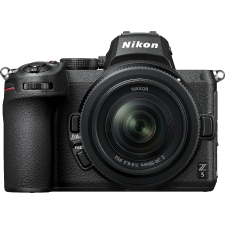
These Download Terms and Conditions ("Agreement") constitute a legal agreement between you (either an individual or single entity) and Nikon Corporation or its associated company ("Nikon") setting forth the terms and conditions governing your download of the operation manual for our products (“Manual”). By clicking the "Download" button on this page in order to start downloading the Manual, you indicate your acceptance of this Agreement and are agreeing to be bound by the terms of this Agreement. Please read this Agreement carefully before beginning download.
This license is not a sale of the Manual and you do not become the owner of the Manual through your purchase of any product, download and/or use. Nikon retain ownership of the Manual and all copies thereof and all related intellectual property rights, and reserves all rights not expressly granted to you under this Agreement. This Agreement constitutes the complete and exclusive agreement, oral or written, between you and Nikon.
The Manual are for customers who have purchased our products. We may be unable to respond to inquiries from individuals who have not purchased our products. Please note that the manual and the contact information therein are subject to change without notice.
The Manual is protected by Japanese copyright law and international copyright laws and treaties. You must reproduce on each copy the Nikon copyright notice and any other proprietary legends that were on the original.
Except as otherwise stated in this Agreement, you may not make or distribute copies of the Manual to others or electronically transfer the Manual from one computer to another over a network. YOU MAY NOT ALTER OR REMOVE ANY COPYRIGHT, TRADEMARK OR OTHER PROTECTIVE NOTICES CONTAINED IN THE MANUAL. YOU MAY NOT ASSIGN OR OTHERWISE DISPOSE OF, MODIFY, ADAPT, TRANSLATE, RENT, LEASE, LOAN, RESELL, DISTRIBUTE, NETWORK, OR CREATE OR HAVE CREATED DERIVATIVE WORKS BASED UPON THE MANUAL OR ANY PART THEREOF.
TO THE MAXIMUM EXTENT PERMITTED UNDER APPLICABLE LAW, THE MANUAL IS PROVIDED ON AN "AS IS" BASIS, WITHOUT WARRANTY OF ANY KIND, AND NIKON, ITS EMPLOYEES, DISTRIBUTORS, DEALERS AND AGENTS SPECIFICALLY DISCLAIM ANY WARRANTY OF ANY KIND, EITHER EXPRESS OR IMPLIED, INCLUDING, BUT NOT LIMITED TO, ANY IMPLIED WARRANTY OF MERCHANTABILITY, FITNESS FOR A PARTICULAR PURPOSE OR NON-INFRINGEMENT. TO THE MAXIMUM EXTENT PERMITTED UNDER APPLICABLE LAW, NIKON, ITS EMPLOYEES, DISTRIBUTORS, DEALERS, AND AGENTS DO NOT WARRANT THE PERFORMANCE OF OR THE RESULTS YOU MAY OBTAIN FROM THE MANUAL, OR THAT THE MANUAL WILL MEET YOUR REQUIREMENTS OR THAT THE OPERATION OF THE MANUAL WILL BE UNINTERRUPTED, ERROR-FREE, OR FREE OF VIRUSES. TO THE MAXIMUM EXTENT PERMITTED UNDER APPLICABLE LAW, NEITHER NIKON, NOR ITS EMPLOYEES, DISTRIBUTORS, DEALERS OR AGENTS SHALL BE LIABLE TO YOU FOR ANY INDIRECT, CONSEQUENTIAL OR INCIDENTAL DAMAGES, LOSSES OR, EXPENSES OF ANY KIND, WHETHER LOSS OF PROFITS, BUSINESS INTERRUPTION, OR OTHERWISE ARISING OUT OF OR RESULTING FROM THE MANUAL, HOWEVER CAUSED, EVEN IF NIKON, ITS EMPLOYEES, DISTRIBUTORS, DEALERS OR AGENTS HAVE BEEN ADVISED OF THE POSSIBILITY OF SUCH DAMAGES, LOSSES, OR EXPENSES. THIS DISCLAIMER CONSTITUTES AN ESSENTIAL PART OF THIS AGREEMENT AND NO USE OF THE MANUAL IS AUTHORIZED EXCEPT UNDER THIS DISCLAIMER.
This Agreement is governed by and shall be construed in accordance with the laws of Japan without regard to its conflicts of laws principles. In the event a dispute arises under or in connection with this Agreement, you hereby consent to personal jurisdiction of Japan and waive any objection that such forum is inconvenient. You further consent to service of process in any action arising from this Agreement by regular mail or other commercially reasonable means of receipted delivery. If any provision of the Agreement shall be determined invalid for any reason, the remaining provisions shall not be invalidated and shall remain in full force and effect. This Agreement sets forth the entire agreement and understanding between you and Nikon, and supersedes and replaces any other agreements relating to the subject matter of this Agreement. The failure of any party to insist upon strict performance of any of the terms or provisions of this Agreement, or the exercise of any option, right or remedy contained herein, shall not be construed as a waiver of any future application of such term, provision, option, right or remedy, and such term, provision, option, right or remedy shall continue and remain in full force and effect. The headings of the sections of this Agreement are inserted for convenience only and shall not constitute a part hereof or affect in any way the meaning or interpretation of this Agreement. Except as otherwise expressly provided herein, the provisions of section 3 and section 4 together with any provisions that by their express terms apply to periods after termination of this Agreement, shall survive termination of this Agreement for any reason.
Manuals for Nikon products/ 2018/02/15/ Ver.2.0.0
Manual Viewer 2
The Nikon Manual Viewer 2 app for iPhones, iPads, iPod touch, and Android devices can be used to download the manuals for Nikon digital SLR cameras and view them offline.
Note: For the latest information, visit the App Store or Google Play.
Download firmware for Nikon digital products (firmware being the built-in software that controls cameras and other devices). To view descriptions, cautions, and download and installation instructions, click “View download page”.Note that a card reader or other equipment may be required for some firmware updates. Instructions can be found on the download page.
Other products
PDF files can be viewed using free Adobe® Reader® software. Download Adobe® Reader®.
- Term of Use
© 2024 Nikon Corporation
- Today's news
- Reviews and deals
- Climate change
- 2024 election
- Fall allergies
- Health news
- Mental health
- Sexual health
- Family health
- So mini ways
- Unapologetically
- Buying guides
Entertainment
- How to Watch
- My watchlist
- Stock market
- Biden economy
- Personal finance
- Stocks: most active
- Stocks: gainers
- Stocks: losers
- Trending tickers
- World indices
- US Treasury bonds
- Top mutual funds
- Highest open interest
- Highest implied volatility
- Currency converter
- Basic materials
- Communication services
- Consumer cyclical
- Consumer defensive
- Financial services
- Industrials
- Real estate
- Mutual funds
- Credit cards
- Balance transfer cards
- Cash back cards
- Rewards cards
- Travel cards
- Online checking
- High-yield savings
- Money market
- Home equity loan
- Personal loans
- Student loans
- Options pit
- Fantasy football
- Pro Pick 'Em
- College Pick 'Em
- Fantasy baseball
- Fantasy hockey
- Fantasy basketball
- Download the app
- Daily fantasy
- Scores and schedules
- GameChannel
- World Baseball Classic
- Premier League
- CONCACAF League
- Champions League
- Motorsports
- Horse racing
- Newsletters
New on Yahoo
- Privacy Dashboard
- Buying Guides
Nikon updates firmware for Z5 and D780 cameras (but don't expect much difference!)
While not as radical as updating a camera from moons ago , Nikon has again brought out another firmware update, this time for the Nikon Z5 and Nikon D780 . While the firmware is only a minor update to both cameras' usability while utilizing the WIFI functionality - it's nice to see Nikon taking care of the company's older customers.
So what are these changes? Nikon is changing the default encryption keys used within the WIFI setting and the password displayed - so if you have been using the WIFI features with your phone or computer, you might want to have them at the ready when performing this firmware update else you will find that you won't be able to reconnect them without putting in the 'new' default password/key.
This will also affect certain wireless transmitters such as the WT-7 for the Nikon D780 that lets you transfer images directly to an FTP server or computer at speeds of up to 866.7 Mbps - rather handy for sports photography.
This will even affect your connectivity to the Nikon camera to the smart device shing app, SnapBridge when using the Nikon Z5 with its built-in WIFI.
While it's great to hear that Nikon is still supporting older DSLR models like the Nikon D780 and its entry-level mirrorless full-framer, the Nikon Z5. But it may be very annoying for all the users who are currently using the WIFI on these respected cameras, we all want to make sure our cameras are up to date, but having to change WIFI password or encryption keys sees a little counter-intuitive?
Get the Nikon D780 firmware and the latest Nikon Z5 firmware
Recommended Stories
Nikon’s z8 is a phenomenal mirrorless camera for the price.
Nikon's Z8 is one of the highest resolution full-frame cameras with 45 megapixels, but is also one of the fastest and has incredible video capabilities too.
Made in the shade: This $150 gazebo from Wayfair — it's over 50% off right now — will transform your summer
Got a graduation, Father's Day or 4th of July bash coming up? This early Way Day deal is your secret weapon.
TechCrunch Space: Rapidly responsive... space stations!?
While there are scant details as to the mission profile, I can't help but feel ultra-intrigued by this news from space station developer Gravitics, which was selected to develop orbital platforms to enable rapid response space missions. Gravitics co-founder and CMO Mike DeRosa did clarify in an email that the company is not putting a module on a rocket for a tactically responsive launch. Instead, the mission is related to developing “platforms to enable a new kind of tactically responsive space mission,” he said.
Amazon earnings preview: AI initiatives expected to take focus
Amazon earnings preview: What to expect from the company's fiscal fourth quarter results
Amazon shoppers love this 'flattering and slimming' flowy top — and it's down to $23
Over 5,000 shoppers are fans: 'For someone with bigger arms, these sleeves are awesome'.
Apple's massively popular AirPods are down to $89 at Amazon — that's close to their Black Friday price
Get this beloved 2nd-gen pair for over 30% off and join the 537,000+ person (seriously) fan club.
McDonald's faces weaker foot traffic, value proposition as it sets to report Q1 earnings
Wall Street is waiting to hear more about how McDonald's consumers are faring.
Ex-UFC heavyweight champion Francis Ngannou announces death of his 15-month-old son Kobe
"How do you deal with such a thing?" Ngannou asked in a social media post announcing his son's death.
33 Nordstrom new arrivals for April you don't want to miss, starting at just $15
I shop for a living and I'm lusting after these new Nordstrom finds from Ugg, Le Creuset, Adidas, Tory Burch, Spanx and more.
Recent College Football Playoff complaints, Dylan Raiola shines and Damien Martinez picks Miami
Dan Wetzel, Ross Delleneger, and SI's Pat Forde recap the 2024 NFL Draft, reacted to recent College Football Playoff complaints, reacted to news of Damien Martinez picking Miami, and discussed Dylan Raiola's impressive spring game.
NFL Draft grades for all 32 teams | Zero Blitz
Jason Fitz and Frank Schwab join forces to recap the draft in the best way they know how: letter grades! Fitz and Frank discuss all 32 teams division by division as they give a snapshot of how fans should be feeling heading into the 2024 season. The duo have key debates on the Dallas Cowboys, New York Giants, New Orleans Saints, Los Angeles Rams, New England Patriots, Las Vegas Raiders and more.
'No peels, no fillers': Salma Hayek's go-to ingredient for ageless skin is in this $10 cream
The bark of the 'Mexican skin tree' is known for its regenerative properties.
'It's the best': Olivia Wilde loves CeraVe — and the brand's eye repair cream is down to an all-time low of $11
Improve the look of puffiness, dryness and more with this cult-fave moisturizer.
What does PITI mean, and how does it affect your mortgage?
PITI is an acronym for the four factors that make up your monthly mortgage payment: principal, interest, taxes, and insurance. Learn how to calculate your PITI.
The best face wash of 2024 to cleanse away dirt, makeup and past mistakes
Cetaphil, Cerave, Youth to the People, Tata Harper, Tatcha and The Outset top our list and tackle every problem and skin type.
Tesla stock surges on 'watershed' full self-driving approval in China
Tesla stock soared at the open on Monday following reports CEO Elon Musk won Chinese approval to deploy the automaker’s Full Self-Driving (FSD) autonomous software on the mainland.
Inside the ‘cold war’ at Techstars as CEO Mäelle Gavet hires, fires, fights to force change
Last spring, founders from all over the world began their treks to Techstars’ Stockholm accelerator program. The bank’s parent company, SVB Financial, was a major investor in Techstars and, like much of the startup world, Techstars had a sizable deposit there, according to sources. A day before the bank completely collapsed, Techstars Stockholm Managing Director Alfredo Jollon posted an essay on LinkedIn saying he had bought shares in SVB Financial.
These are the most-hated chores in America — and the products you need to make them easier, starting at $5
'I love to scrub grout until my hands bleed,' said no one ever. Don't worry — our picks from Zep, Bissell, Windex and more are here to help.
AMD to report Q1 earnings Tuesday as Wall Street looks for jump in AI and PC sales
AMD will report its Q1 earnings after the bell on Tuesday as Wall Street looks for signs of AI and PC sales growth.
How expanded use of GLP-1s could affect long-term outlooks for Eli Lilly and Novo Nordisk
The latest GLP-1 drugs are starting to see proof of greater use beyond diabetes and obesity. How will it affect makers Novo Nordisk and Eli Lilly?
Moscow Metro
From the archives - these are from 2015, recently rediscovered and reprocessed:

Cheers, Holger
Nice stuff. Here's a shot from the St. Petersburg subway of an air grate taken with my V1.

Light travels at 2.13085531 × 10^14 smoots per fortnight. Catch some today!
I enjoy these glimpses of other countries and places, to see what is different and what is essentially the same in the lives of other people. Thanks for posting these interesting photos.
Really interesting to see these - monumental architecture - I could post some shots of the underground in Liverpool - but don't think it would pass muster.
I am not sure what these forums are for but, for me, these photos of city and other shots from places I will never get to are what I look forward to seeing.
Sort of National Geographic from a very personal point of view
rich_cx139 wrote: Really interesting to see these - monumental architecture - I could post some shots of the underground in Liverpool - but don't think it would pass muster. I am not sure what these forums are for but, for me, these photos of city and other shots from places I will never get to are what I look forward to seeing. Sort of National Geographic from a very personal point of view cheers richard
Thank you, Richard!
I think that we can make out of the N1 forum whatever we want it to be. Everybody else has moved on to some other hunting grounds by now, with N1 being a "dead system" (haha). There even isn't a community moderator assigned to here any more.
BTW, as it'll be some time for me to come to Liverpool (no further business trips for me, yeah!!), I'm actually curious to see pictures from there...
RichDitch wrote: I enjoy these glimpses of other countries and places, to see what is different and what is essentially the same in the lives of other people. Thanks for posting these interesting photos.
Thanks! The pictures were taken on a business trip and I had been lucky to steal a few hours at good weather after work. it was what I enjoyed most on those trips and the N1 system was a perfect companion there.
holgerlinke wrote:
I think that we can make out of the N1 forum whatever we want it to be. Everybody else has moved on to some other hunting grounds by now, with N1 being a "dead system" (haha). There even isn't a community moderator assigned to here any more. BTW, as it'll be some time for me to come to Liverpool (no further business trips for me, yeah!!), I'm actually curious to see pictures from there... Holger
I agree and think that is a terrific idea.
Nikon may have killed off the N1 system with no future products and essentially non existent support, but I do not view this as a dead system. I only discovered how good N1 stuff is about 2 months before Nikon pulled the plug and since then I've purposely built out my system with many bodies and lots of lenses. My larger gear with 3 DX bodies and lenses from 12mm to 500mm sits gathering dust, unused since the N1 gear is so fun and covers almost all my needs.
So, there's still a place for sharing information from the veterans to the new users. And there's definitely room to share images from around the world taken with N1 cameras and lenses.
Latest sample galleries

Latest in-depth reviews

The Panasonic Lumix S5II launched the second generation of Panasonic’s full-frame mirrorless camera system and was the first Panasonic to feature phase detect autofocus. As our review reveals, it’s a heck of an all-around camera for both still and video shooters.

The latest Lumix puts a Four Thirds sensor in a full-frame body with boosted AF and a wealth of stills and video capabilities to create a Swiss Army Knife of a Micro Four Thirds camera.

The fourth camera in Leica's SL series of full-frame mirrorless cameras sees the 60MP BSI sensor from the Q3 and M11 models arrive with a significant interface redesign.

The Fujifilm X100VI is the sixth iteration of Fujifilm's classically-styled large sensor compact. A 40MP X-Trans sensor, in-body stabilization and 6.2K video are among the updates.

The Nikon Zf is a 24MP full-frame mirrorless camera with classic looks that brings significant improvements to Nikon's mid-price cameras. We just shot a sample reel to get a better feel for its video features and have added our impressions to the review.
Latest buying guides

What’s the best camera for around $2000? This price point gives you access to some of the most all-round capable cameras available. Excellent image quality, powerful autofocus and great looking video are the least you can expect. We've picked the models that really stand out.

What's the best camera for travel? Good travel cameras should be small, versatile, and offer good image quality. In this buying guide we've rounded-up several great cameras for travel and recommended the best.

If you want a compact camera that produces great quality photos without the hassle of changing lenses, there are plenty of choices available for every budget. Read on to find out which portable enthusiast compacts are our favorites.

'What's the best mirrorless camera?' We're glad you asked.

Above $2500 cameras tend to become increasingly specialized, making it difficult to select a 'best' option. We case our eye over the options costing more than $2500 but less than $4000, to find the best all-rounder.

- Gear Patrol
- Work for us
- Advertise with us
- Feedback / Contact us
- Camera reviews
- Lens reviews
- Printer reviews
- Buying guides
- Sample images
- Editorial enquiries
- Camera search
- Camera comparison
- Lens search
- Product timeline
- Browse all products
- Community Guidelines
- My Settings
- My GearList

IMAGES
VIDEO
COMMENTS
In particular, a Nikon Z6 and Z7. No D850, no D5, just two Z's. A number of reasons backed this decision: (1) people don't think mirrorless can do safari well; (2) I wanted to travel as light as possible but stay full frame; (3) I wanted to compare my most recent Nikon DSLR experience in Africa with Nikon's new mirrorless gear; (4) I'm still ...
Is the Nikon Z 5 a limiting factor for safari - should I rent another camera body? I would prefer not to rent another camera body if it is not essential, as a Z8 / Z9 rental is relatively expensive - much more than renting a 100-400mm lens. ... Nikon Z5 Nikon Z7 II Nikon Z8 Nikon Zf Nikon Z 50mm F1.8 +6 more.
I am going on safari in a few weeks, and I am renting the 100-400mm telephoto lens. Is the Nikon Z 5 a limiting factor for safari - should I rent another camera body? I would prefer not to rent another camera body if it is not essential, as a Z8 / Z9 rental is relatively expensive - much more than renting a 100-400mm lens. ANSWER: View the answer.
Re: Is Nikon Z 5 good enough for safari? In reply to Friedrich von Horsten • 1 month ago. 1. Friedrich von Horsten wrote: Any basic camera like D600, Z5, Z6, Z50 can give you amazing wildlife shots in the right conditions…. The question is really "What kind of wildlife shots are you aiming for?". Z5 will frustrate him for BIF, high ...
The Nikon Z5 sells for $1399 body-only, $1699 kitted with the new 24-50mm F4-6.3 lens and $2199 kitted with the 24-200 F4-6.3 VR. Buy now: $1097 at B&H Photo. $1097 at Adorama. $1097 at Amazon. Table of contents What's new and how it compares. The Z5 is essentially a stripped down Z6. Here's what Nikon changed in the camera to keep the price down.
The Z5's dynamic range at ISO 100 is incredible, just like every Nikon FX (and DX) sensor has been for the last 10+ years! It crushes the competition from Canon's slightly more affordable EOS RP, and roughly matches the dynamic range from other 24-megapixel full-frame sensors from Sony, Sigma, and Panasonic, including the nearest competition from the Sony A7 III and A7c.
A detailed list of camera specifications is available on the Nikon Z5 page of Nikon USA.. NIKON Z 5 + NIKKOR Z 24-200mm f/4-6.3 VR @ 200mm, ISO 100, 1/125, f/8.0. If the Nikon Z5 is so similar to its sibling, the Nikon Z6, you might be wondering about their differences.After-all, these cameras are priced quite a bit apart ($400 to be exact, at the time of publishing the article).
Nikon seems to have picked a gain adjustment on the Z5 that splits the difference on the Z6. Thus, at up to ISO 640 the Z5 is actually slightly better than the Z6, perhaps a third of a stop more dynamic range. At ISO 800 and above, the Z6 is the better camera, typically about a half stop better than the Z5.
While the Nikon Z5 can be purchased body-only, most will want to invest in the kit that includes Nikon's new 24-50mm f/4-6.3 standard zoom lens. The launch price of this kit is $1,699 / £1,719 ...
An East African safari is a perfect example of when to do it. Trusted camera gear rental companies include Adorama in the US and Hireacamera in the UK. The most telephoto Nikon Z lens I own has a ...
The Nikon Z5 is Nikon's cheapest full frame mirrorless camera.Designed as an entry-point for those who want to upgrade to the larger sensor size, the Z5 looks a lot like its premium cousins in the series, the high-resolution Nikon Z7 II and the all-rounder Z6 II.. However, it's somewhat stripped-down compared to those cameras and their predecessors, with a 24.3MP full-frame CMOS sensor ...
Nikon FX-format CMOS image sensor featuring 24.3 effective megapixels and ISO 100-51200. 273-point *1 AF system offering accurate focus across 90% of the frame both horizontally and vertically while allowing touch AF during live view. Eye-Detection AF *2 and Animal-Detection AF *3 that automatically detects and tracks the eyes of both human ...
The D6 is Nikon's most advanced DSLR. Wildlife photographers have been using the D1/D2/D3/D4/D5/D6 series for decades, and the D6 continues that tradition. It has an amazing autofocus system, tank-like build quality, and a high frame rate of 14 FPS bursts. Like the Nikon Z9, the Nikon D6 has the potential downsides of price and weight.
The answer is a little tricky. The Z50's advantage is smaller size and weight (particularly with the kit lens) without really giving up much in the way of features, plus a built-in flash. The Z5's advantage is sensor-VR, larger FX frame size, and better battery life. Nikon really wants you to go FX. It's where their lens energy is, and then ...
The Nikon Z50 does not have in-body stabilization, so relies on VR lenses like the Nikkor Z DX 50-250mm f/4.5-6.3 for stabilization. The Nikon Z5 does have in-body stabilization. (Image credit: Nikkor Z) • Nikon Z5: 5-axis to 5EV • Nikon Z50: Lens-based. Like Nikon's other full-frame mirrorless cameras, the Z5 has in-body stabilization ...
Here are the primary second lens choices for safari in the Z-mount: Nikkor 24-120mm f/4 S — My teaching assistant uses this and is happy with what it provides (his primary lens is a 400mm f/4.5 VR S or sometimes 100-400mm f/4.5-5.6 VR S). One aspect of the 24-120mm f/4 S lens that isn't often mentioned is its ability to focus close (15", or ...
Safari photos w/ Z5, Z 100-400 telephoto Locked post. New comments cannot be posted. Share Add a Comment. Be the first to comment Nobody's responded to this post yet. Add your thoughts and get the conversation going. Home; Popular; TOPICS ... Nikon Z5 (24-70 f4) is an absolute beast. ...
Manuals for Nikon products/ 2018/02/15/ Ver.2.0.0. Software. Title Version Released. Z 5 Firmware. Firmware. Download software for Nikon products. To view descriptions, cautions, and download and installation instructions, click "View download page". Title Version Released. NX Studio.
While not as radical as updating a camera from moons ago, Nikon has again brought out another firmware update, this time for the Nikon Z5 and Nikon D780.While the firmware is only a minor update ...
Also, I'm going on safari in South Africa. ... Your Z5 is fine, even for low speed action with wide area, dynamic area mode and single point, just don't rely on eye detection other than maybe big cats, as only made for dogs & cats. ... This $250 electronic lens adapter is perfect for Nikon Z-mount curious Sony shooters — shhh, we won't ...
105K subscribers in the Nikon community. We are a community that discusses all things Nikon cameras and lenses. Feel free to ask a question, or post…
The Fujifilm X100VI is the sixth iteration of Fujifilm's classically-styled large sensor compact. A 40MP X-Trans sensor, in-body stabilization and 6.2K video are among the updates. The Nikon Zf is a 24MP full-frame mirrorless camera with classic looks that brings significant improvements to Nikon's mid-price cameras.
All forums Nikon FX SLR (DF, D1-D5, D600-D850) Talk Change forum Store in Moscow (slightly off-topic) Started Oct 29, 2009 | Discussions
Expert news, reviews and videos of the latest digital cameras, lenses, accessories, and phones. Get answers to your questions in our photography forums.